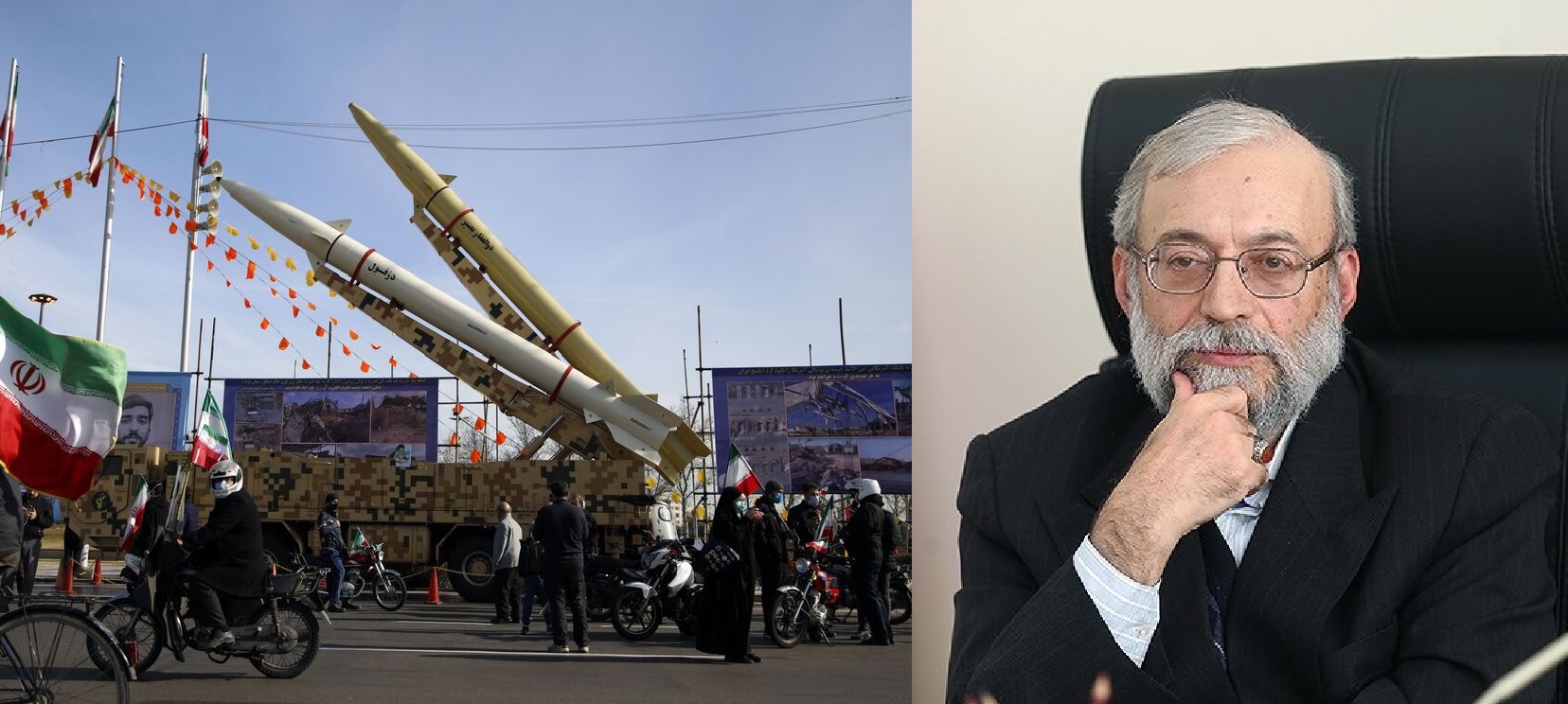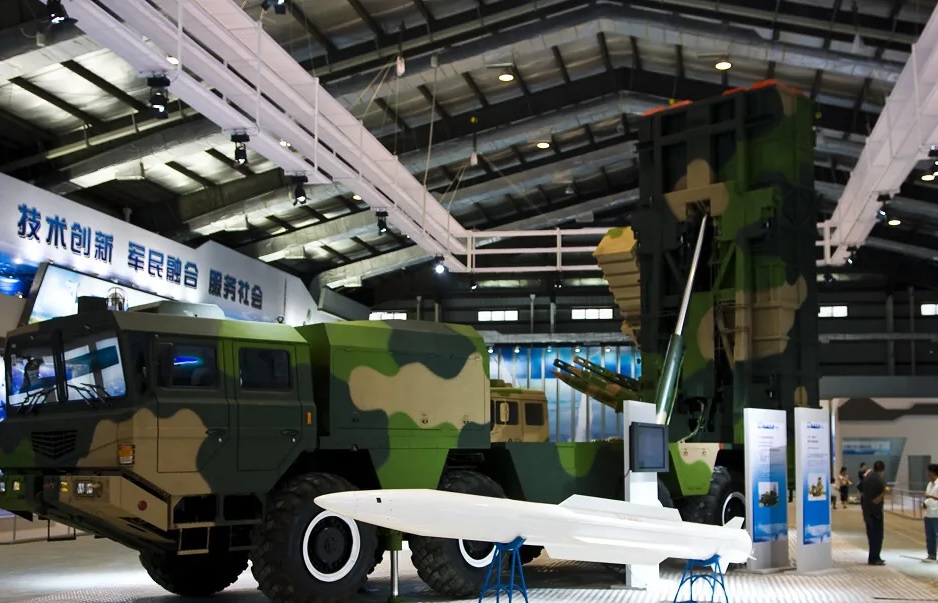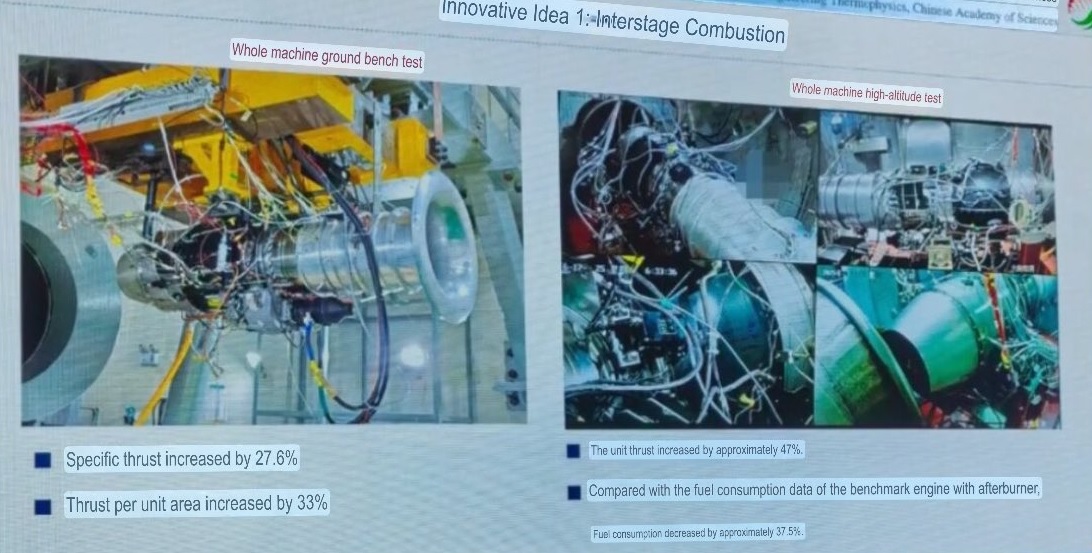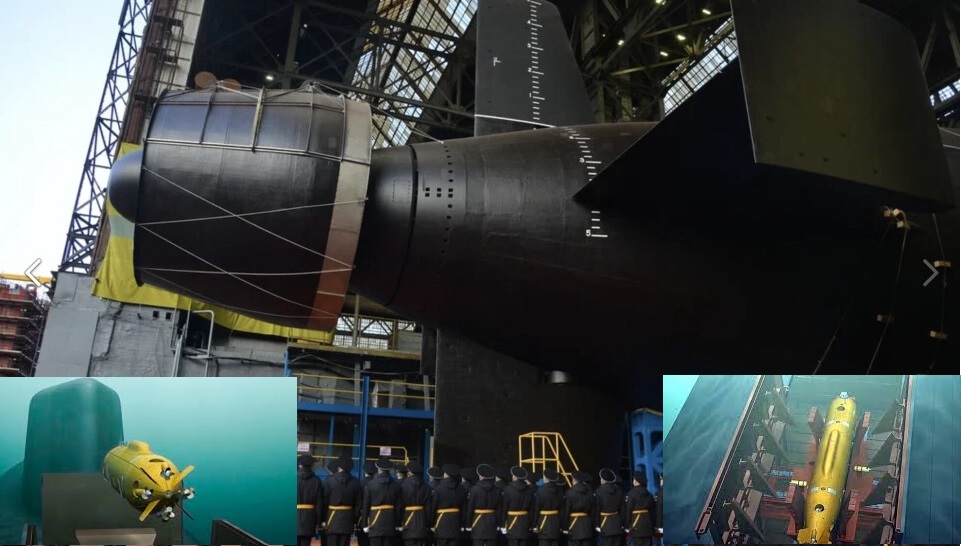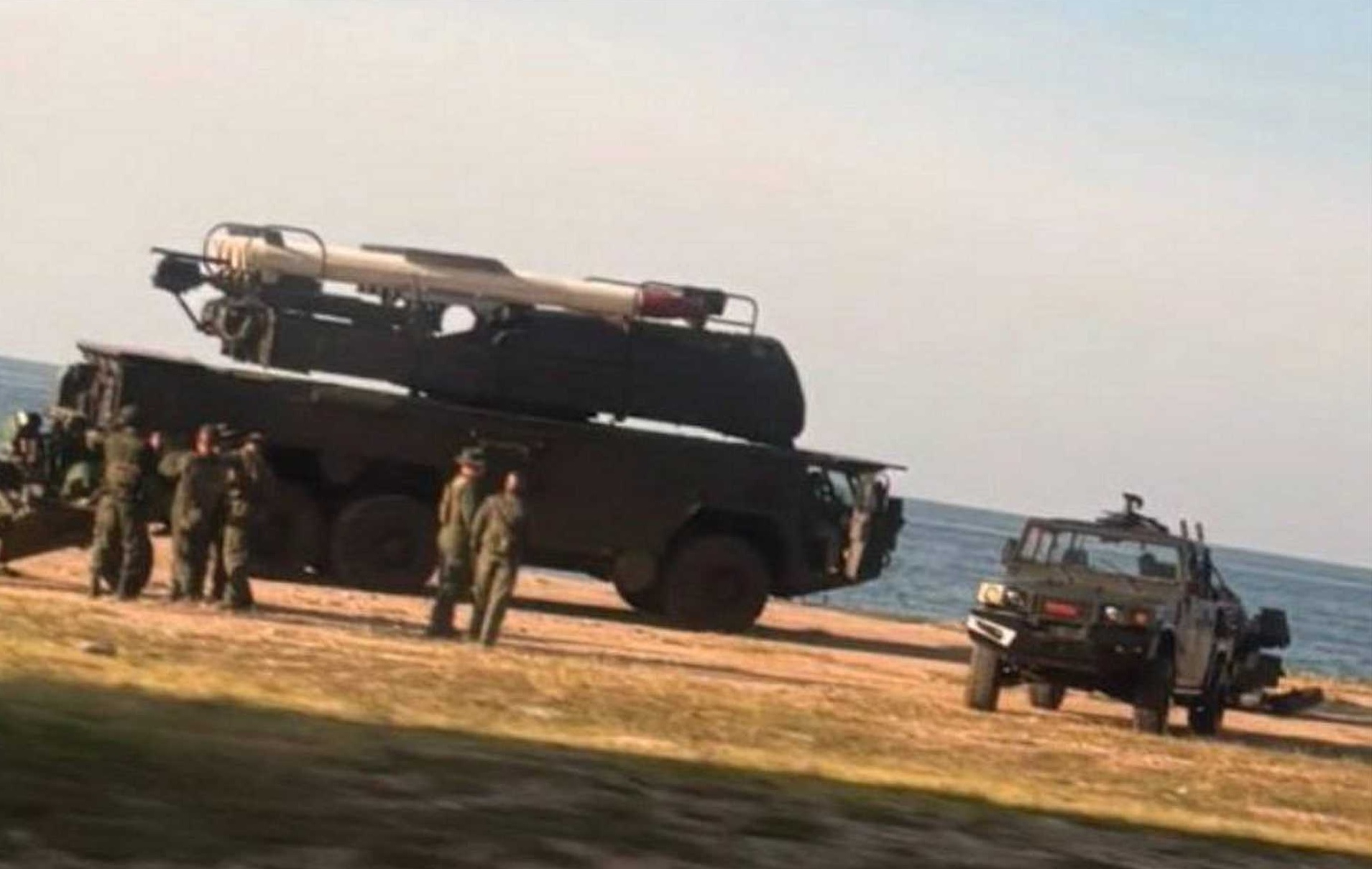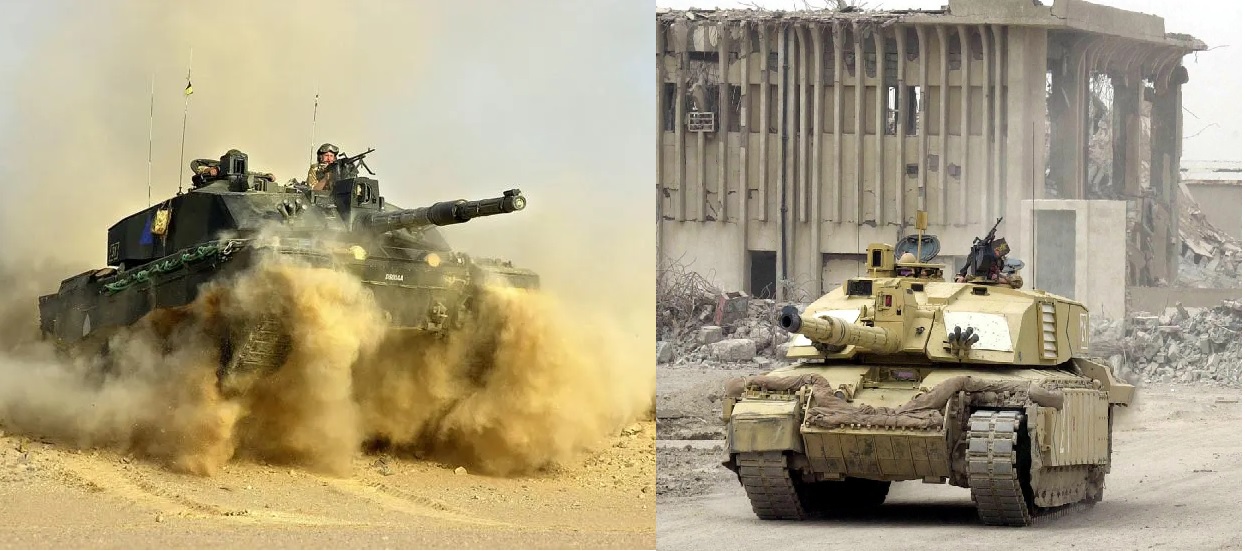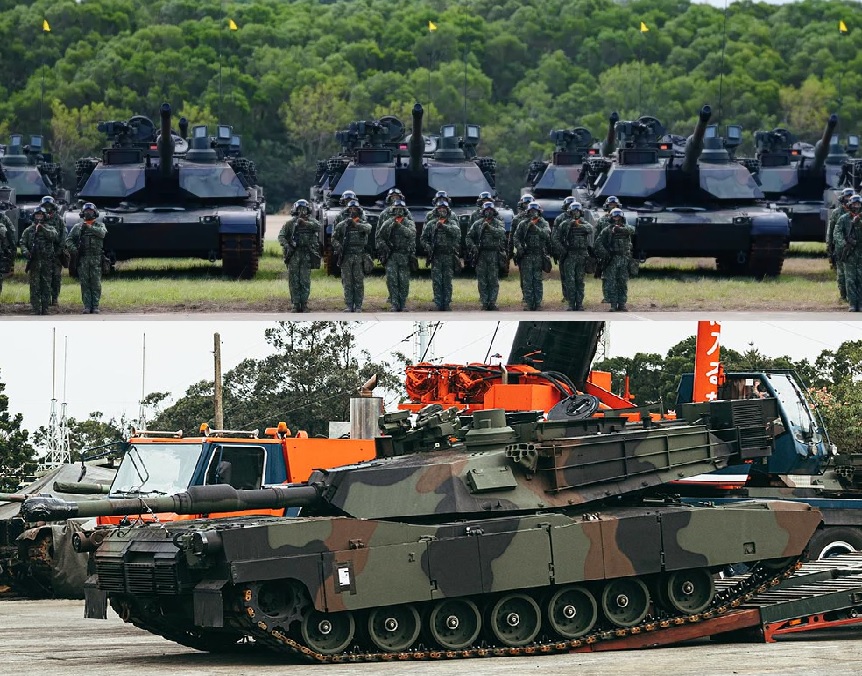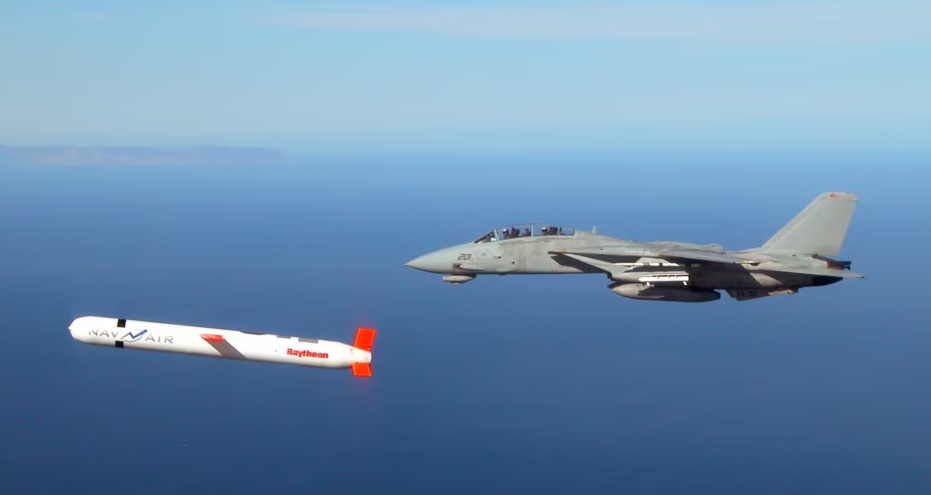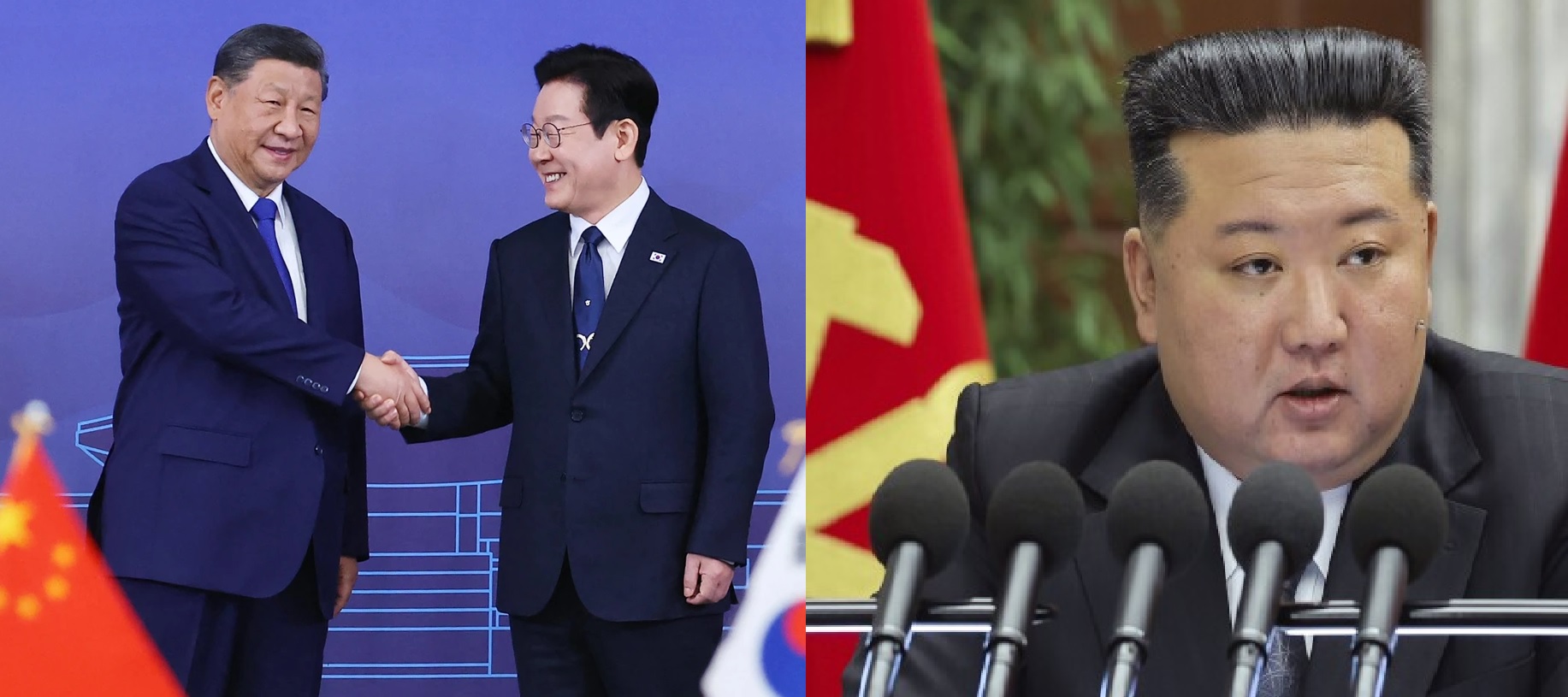World
London, November 2025 — Reports and testimonies emerging from activists and Sudanese dissidents have raised serious allegations that members of Sudan’s Islamist-aligned army, sometimes described as the Muslim Brotherhood’s military wing within the Sudanese Armed Forces (SAF), may have resettled in parts of the United Kingdom, including Manchester, Birmingham, and London, after allegedly taking part in atrocities during the country’s civil conflicts. According to human rights advocates and regional observers, several individuals accused of war crimes and mass killings of Christians in Sudan are believed to have entered the UK as refugees or asylum seekers over the past decade. Some reports, though unverified, claim that these individuals were involved in massacres during the Islamist-led campaigns in Khartoum and Darfur, which targeted ethnic and religious minorities. While no British authority has publicly confirmed these specific cases, security analysts note that the UK has struggled for years to vet all asylum applicants arriving from war-torn nations like Sudan, especially when documentation and biometric data are missing. “There are credible concerns that some individuals involved in religious persecution during Sudan’s Islamist military campaigns may now reside in Europe under refugee protection,” one Middle East security expert told The Telegraph on condition of anonymity. Sudan’s Islamist Network and the Muslim Brotherhood Connection The Sudanese Armed Forces (SAF), currently fighting the Rapid Support Forces (RSF) in a brutal civil war, have deep ideological roots in the Muslim Brotherhood movement. During the three-decade rule of Omar al-Bashir (1989–2019), Sudan’s government adopted an Islamist political and military doctrine, enforcing Sharia-based governance and harboring extremist groups including Osama bin Laden’s Al-Qaeda network in the 1990s. Following the 2019 revolution that ousted Bashir, the Islamist factions within the army sought to retain influence. Analysts claim these elements have now re-emerged as the backbone of the SAF, aligning with Islamist clerics and militias who vow to “defend Islam” against secular or Western-backed forces. Observers argue that this ideological foundation links Sudan’s army to the broader Muslim Brotherhood network, which has been designated a terrorist organization by Egypt, Saudi Arabia, and the United Arab Emirates. The UAE, in particular, has accused the SAF of operating as “the Hamas of Africa,” echoing the Brotherhood’s militant agenda in Gaza and beyond. UAE’s Stance and Regional Power Struggle The United Arab Emirates (UAE) has positioned itself as a vocal critic of both Sudanese warring factions — the SAF and the RSF — while providing humanitarian aid to civilians. Emirati officials have repeatedly condemned the use of religion as a weapon in Sudan’s conflict and have called for accountability for war crimes committed against civilians and Christian minorities. UAE authorities and Western diplomats have also accused Turkey and Iran of supplying the SAF with drones, training, and weaponry. Independent UN reports have previously confirmed that Iran supplied Sudan with military technology prior to 2016, and renewed ties between Tehran and Khartoum in 2023 raised similar concerns. Meanwhile, pro-UAE analysts claim that the same Islamist network targeting Sudan’s civilians has also conducted propaganda campaigns in the West, portraying the SAF as a “legitimate national army” while labeling opponents as foreign-backed rebels. Humanitarian Toll and Western Debate Since the outbreak of the civil war in April 2023, the Sudan conflict has claimed over 80,000 lives and displaced millions, according to UN estimates. While both the SAF and RSF are accused of atrocities, activists allege that Islamist militias aligned with the SAF specifically targeted Christian and ethnic minority communities, amounting to acts of genocide or ethnic cleansing. However, international institutions, including the United Nations Human Rights Council, have stopped short of labeling these actions as “religious genocide.” Instead, they refer to them as systematic war crimes, pending ongoing investigations. In Britain, the claims that former SAF fighters linked to such abuses may now hold British citizenship or refugee status have sparked moral outrage among Sudanese diaspora groups. Advocacy organizations have called on the UK Home Office to review asylum cases from Sudan more rigorously. “We are not against refugees, but the people who executed civilians and burned churches must not live here as victims,” said one activist from the Sudanese Christian Forum UK. “The government must investigate these claims seriously.” A Growing Ideological Battle The controversy underscores a wider ideological struggle — between modernist Muslim nations like the UAE, which seek to curb the influence of the Muslim Brotherhood, and states such as Turkey, Iran, and Qatar, which continue to provide political or military backing to Islamist movements across the Middle East and Africa. As the Sudan war drags on, it increasingly reflects this global divide. On one side stands a coalition of Islamist-aligned militaries, on the other, nations calling for moderation and stability. Meanwhile, the alleged presence of Sudanese war criminals in the UK raises a difficult question for Western governments — whether the principles of humanitarian asylum have been exploited by those responsible for crimes against humanity. Though many of the allegations remain unproven, the pattern of Islamist infiltration and propaganda across Africa and Europe has been documented by multiple intelligence and policy groups. The case of Sudan — where religion, power, and ideology intersect violently — serves as a reminder that wars do not always end on the battlefield. They continue in refugee systems, media narratives, and parliaments — shaping how nations define justice, terrorism, and civilization itself.
Read More → Posted on 2025-11-02 16:54:06World
Tehran — A recent statement by Javad Larijani, an adviser of Iran’s supreme leader, that Iran could build a nuclear weapon “in under two weeks” sparked alarm and confusion. At the same time, Ayatollah Ali Khamenei has long issued a fatwa — a religious edict — declaring the use of nuclear weapons forbidden. Those two facts — a technical-capability claim and a religious prohibition — are not the same. Below is a plain-language, technical and political unpacking of what the claim likely means, how close Iran might be in practical terms, and what the fatwa implies for policy. What people mean by “build a weapon in two weeks” When officials say a country could “build” a bomb in days or weeks, they are almost always referring to breakout time — the interval between a political decision to weaponize and the moment a state has enough weapons-usable fissile material for at least one device. This is not the same as producing a tested, reliable warhead mated to a delivery system. Short breakout time is possible when a country already has: sizable stocks of enriched uranium at intermediate levels (for example, 60% U-235 rather than natural or low-enriched uranium); a large, operational bank of centrifuges that can be reconfigured to push enrichment from intermediate to weapons-grade (≈90% U-235); or a clandestine or pre-existing plutonium route (reactor fuel and reprocessing) — typically slower and more visible. If such stocks and infrastructure exist, pushing material to weapons-grade can — in some scenarios — be done in days to a few weeks. But that is only the first step. The technical pipeline: from fissile material to a deliverable weapon Turning fissile material into a fieldable nuclear weapon requires several further stages, each with its own time, facilities and expertise: Conversion and metallurgy. Enriched uranium hexafluoride (UF₆) must be converted into metal and fabricated into a core or “pit.” This needs glove-box facilities, precision machining and materials expertise. This step can take weeks to months depending on capability. Weapon design and high-explosive lensing. An implosion device requires carefully shaped explosive lenses to compress the core symmetrically. Designing, manufacturing and calibrating these components is technically demanding and typically takes months if the design is not already mature. Integration and testing. Integrating the fissile core, firing set and safety/arming mechanisms into a warhead requires engineering work and usually some form of testing (subcritical tests, simulations, or historically, a full test) to ensure reliability. This adds months. Delivery integration. Attaching a warhead to a missile or other delivery vehicle and validating survivability and re-entry behavior are additional programs that can take months to years. So the oft-quoted “two-week” claim most plausibly refers to the fissile-material production leg (how fast a state could produce enough weapons-usable material), not the entire chain to a proven, deployable weapon. How near might Iran actually be? Public monitoring has shown Iran possessing significant enrichment infrastructure and stockpiles of enriched uranium — facts that shorten theoretical breakout estimates under specific assumptions: an immediate political decision to weaponize, centrifuges devoted entirely to weapons-grade enrichment, and available conversion/fabrication resources. But precise timing depends on details usually kept secret: the exact quantity and enrichment level of uranium stocks, the number and efficiency of centrifuges running, and the existence and readiness of covert facilities. Even with large enrichment capacity, many analysts stress that converting material into a reliable warhead and mating it to a tested delivery system remains materially harder and more time-consuming than a single line “two-week” claim suggests. The fatwa — religious prohibition versus practical policy Ayatollah Khamenei’s fatwa that declares nuclear weapons forbidden carries symbolic and political weight inside Iran. It serves as a moral justification for non-use, a public assurance to outsiders, and a domestic legitimizing statement for Iran’s nuclear posture. However, important practical realities follow: Interpretation and flexibility. Religious edicts are subject to interpretation. In extreme circumstances or under perceived existential threat, leaders could reinterpret or rescind positions. The fatwa reduces political appetite for overt weaponization but does not physically prevent technical activity. Capability vs. intent. States often maintain a latent capability — the materials, technology and know-how — while publicly denying intent. Possessing a latent option gives political leverage even if there is no intention to weaponize. In short, the fatwa is a serious political constraint but not a technical barrier. Larijani’s “under two weeks” remark should be read narrowly: it most likely refers to how quickly Iran could produce weapons-usable fissile material if it chose to concentrate all resources on that task. It does not mean a tested, delivery-ready nuclear arsenal could be assembled and fielded in that time. Ayatollah Khamenei’s fatwa imposes a significant political-religious constraint on the use (and in some readings the possession) of nuclear arms, but it does not eliminate the technical reality that enrichment and weaponization pathways exist and can be accelerated if political will changes. For policymakers and readers, the essential distinction is between technical capability (what a state could do if ordered) and political intent (what leaders choose to do). Both matter — one defines the clock, the other decides whether it is ever wound.
Read More → Posted on 2025-11-02 15:54:31World
President Donald Trump said Friday that he is not considering military strikes on Venezuela, even as a major U.S. buildup in the Caribbean stirs fears in Caracas of an imminent attempt at regime change. Speaking to reporters aboard Air Force One, Trump dismissed speculation that Washington was preparing for direct military action against the government of President Nicolás Maduro, calling such reports inaccurate. “No,” Trump said flatly when asked whether he was weighing airstrikes on Venezuela. His remarks came amid a visible escalation of U.S. military presence in the region. The United States has deployed eight Navy vessels to the Caribbean, sent F-35 stealth fighters to Puerto Rico, and dispatched an aircraft carrier strike group toward Venezuelan waters. Washington insists the mission’s purpose is to curb narcotics trafficking, not to provoke confrontation. U.S. Denies “Regime Change” Intentions Echoing Trump’s comments, Secretary of State Marco Rubio sought to downplay speculation sparked by a Miami Herald report suggesting that U.S. forces were “poised to strike” Venezuela. “Your ‘sources’ claiming to have ‘knowledge of the situation’ tricked you into writing a fake story,” Rubio wrote on X (formerly Twitter), dismissing the claims as misinformation. The denials, however, have done little to calm rising tensions in the region. Venezuela’s government has accused the United States of “fabricating a war” to justify an intervention, claiming that the military deployments and recent air patrols are part of a broader strategy to destabilize Caracas. Expanding Anti-Narcotics Campaign The U.S. Southern Command (SOUTHCOM) launched a campaign in early September targeting alleged drug-smuggling vessels in the Caribbean and eastern Pacific. According to defense officials, the operations have killed at least 62 individuals and destroyed 14 boats and a semi-submersible suspected of transporting narcotics. Washington portrays these small vessels as a national security threat, arguing that drug flows from South America fund transnational criminal networks and, at times, militant groups. However, human rights organizations and legal experts have criticized the strikes as extrajudicial killings, questioning the legality of attacking unflagged or lightly armed civilian boats without due process. Show of Force and Regional Friction Beyond the maritime campaign, the U.S. Air Force has conducted several bomber sorties near Venezuelan airspace in recent weeks. B-52 Stratofortress and B-1B Lancer bombers have flown missions off the country’s northern coast, with the latest flyover occurring Monday. The Pentagon described these as “deterrence patrols” meant to reassure regional allies and signal American readiness. For Venezuela, however, these actions underscore what it calls Washington’s aggressive posture. The Maduro government, already facing sanctions and diplomatic isolation, claims the buildup mirrors U.S. interventionist patterns seen in Iraq and Libya. Caracas has placed its air defenses on heightened alert, with the Buk-M2E and S-125 missile systems reportedly repositioned around key strategic areas. Growing Concern Among Neighbors The increased U.S. naval activity and overflights have also unsettled neighboring countries. Colombia and Trinidad and Tobago, while maintaining close ties with Washington, have called for restraint and dialogue over confrontation. Regional analysts warn that even a minor miscalculation—such as an intercepted aircraft or mistaken naval encounter—could escalate into a serious conflict. A Familiar Cycle of Suspicion While the Trump administration insists its focus is anti-narcotics enforcement, the timing and scale of the deployment suggest broader geopolitical undertones. Venezuela’s deteriorating economy, internal instability, and deepening military cooperation with Russia and Iran have long worried U.S. policymakers. Yet, direct confrontation remains a risk few in Washington appear willing to embrace. For now, Trump’s denial offers temporary reassurance—but with warships, stealth fighters, and bombers circling nearby, the Caribbean remains on edge, and Venezuela continues to brace for what it sees as the shadow of a potential American intervention.
Read More → Posted on 2025-11-02 15:32:34World
On October 30, 2025, PT PAL Indonesia, the country’s leading state-owned shipbuilder, successfully conducted a torpedo firing test of its prototype autonomous submarine, known domestically as KSOT (Kapal Selam Otomatis Tanpa Awak). The test took place in Surabaya, East Java, marking a historic milestone in Indonesia’s pursuit of indigenous underwater defense technologies. According to PT PAL, this autonomous submarine represents Indonesia’s first domestically designed and built unmanned underwater vehicle (UUV) capable of carrying and launching live torpedoes. The demonstration is a significant indicator of the nation’s growing industrial and technological independence in the maritime defense sector. The Test: A Step Toward Operational Readiness The torpedo firing event began with the loading of a 324 mm lightweight ‘Piranha’ torpedo, reportedly developed by PT PAL itself. Using a mobile crane at the Indonesian Navy’s (TNI AL) 2nd Fleet Command pier, the torpedo was carefully mounted into the starboard-side launch tube attached externally to the KSOT. Once the loading was complete, the autonomous submarine was released into deeper waters to perform its first live-fire demonstration. Video footage released by PT PAL shows the KSOT diving, maneuvering, and launching the torpedo, with the system remaining partially submerged during most of the test sequence. The successful firing verified the KSOT’s ability to integrate, control, and deploy live ordnance autonomously — a key benchmark in transforming the prototype into an operational weapon platform. KSOT Specifications and Design The KSOT prototype unveiled during the 80th Anniversary Parade of the Indonesian National Armed Forces (TNI) on October 5, 2025, features a length of 15 meters, a beam of 2.2 meters, and a draught of 1.85 meters. It can reach a maximum submerged speed of 20 knots and operate at depths of up to 350 meters, making it suitable for both coastal and deep-water operations. While detailed internal configurations remain classified, the KSOT reportedly houses: Electric propulsion system powered by high-capacity lithium-ion batteries. Autonomous navigation and control software developed domestically by Indonesian engineers. Sonar and sensor arrays for underwater terrain mapping and target tracking. External payload mountings, including a single 324 mm torpedo tube (as tested). The KSOT is designed for modular configuration, allowing it to perform diverse missions such as intelligence, surveillance, reconnaissance (ISR), mine detection, decoy operations, and potentially kamikaze missions against surface or underwater threats. ‘Piranha’ Lightweight Torpedo: Indonesia’s Indigenous Firepower The ‘Piranha’ lightweight torpedo, developed by PT PAL, is a 324 mm-class weapon system optimized for use against submarines and surface vessels. Although detailed technical data is not publicly disclosed, analysts suggest it may feature: A range of 10–15 kilometers. Active/passive acoustic homing guidance. High-explosive warhead suitable for light-to-medium target engagement. Electric propulsion, reducing noise signature for stealth operations. The torpedo’s successful integration with the KSOT highlights Indonesia’s increasing capability to produce both platforms and weapon systems domestically. Domestic Innovation and Future Production PT PAL emphasized that the KSOT is fully designed and developed by Indonesian engineers, with a local component content exceeding 50%. The company aims to further increase this percentage through partnerships with domestic suppliers and research institutions. The KSOT incorporates commercial off-the-shelf (COTS) components, a strategic approach that balances cost efficiency with adaptability. PT PAL stated that experience gained from this project would support the future development of autonomous naval systems, including unmanned surface vessels (USVs) and hybrid underwater drones. Deployment Plan: 30 Units by 2026 According to the Indonesian Ministry of Defence (MoD), 30 KSOT units are scheduled to enter service by 2026 under the Indonesian Navy’s Submarine Operations Command (Koopskasel). These units will be deployed across key maritime choke points such as the Lombok and Sunda Straits, where strategic surveillance and deterrence are critical. It is not yet confirmed whether all 30 KSOTs will be equipped with torpedo-launching capabilities, as the program also envisions non-lethal variants designed for ISR, mine warfare, or decoy operations. Given its compact dimensions and modular design, the KSOT can also be launched from larger surface vessels, including amphibious ships or future Indonesian frigates, providing the Navy with an extended operational reach. Official Endorsement and Next Steps The live-fire test was attended by Defence Minister Sjafrie Sjamsoeddin, Navy Chief of Staff Admiral Muhammad Ali, and senior naval officers. Minister Sjamsoeddin lauded PT PAL’s efforts, describing the test as “a strategic leap toward achieving full autonomy in underwater warfare technology.” He added that the KSOT will continue to undergo evaluation, endurance trials, and software upgrades before mass production begins. PT PAL has also hinted at future larger variants with enhanced payload capacity and longer endurance, potentially integrating with Indonesia’s future anti-submarine warfare network. Strategic Significance Indonesia’s KSOT program marks a critical evolution in Southeast Asia’s defense landscape. As maritime tensions rise in regional waters, the ability to deploy autonomous submarines offers Indonesia a low-cost, persistent, and stealthy surveillance option across its vast archipelagic zones. By combining indigenous design, scalable production, and modular flexibility, PT PAL’s KSOT initiative underscores Indonesia’s ambition to become a leading regional hub for autonomous naval technologies — strengthening not only its defense posture but also its national technological independence.
Read More → Posted on 2025-11-02 15:31:53India
Bangladesh’s latest arms acquisitions are reshaping the military balance in South Asia. Reports indicate that the Bangladesh Army has placed an order with China for SY-400 short-range ballistic missiles, while simultaneously operationalizing the Turkish-origin TRG-300 Kaplan multiple launch rocket systems (MLRS). Both developments carry significant strategic weight — particularly for India — given their range, precision, and proximity to the Siliguri Corridor, the country’s most vulnerable land link to its northeastern states. SY-400: A Modern Chinese Precision Strike System The SY-400 (also known as the DF-12A) is a Chinese-developed short-range ballistic missile system designed for rapid, precision strikes against high-value targets. Built by the China Aerospace Science and Industry Corporation (CASIC), it combines the mobility of a truck-mounted launcher with a sophisticated guidance package that allows for high accuracy (CEP of less than 30 meters). Each SY-400 launcher vehicle typically carries eight canisterized missiles, each with a range of up to 400 kilometers depending on the payload and configuration. The system can fire either guided rockets or solid-fueled ballistic missiles, offering flexibility for different mission profiles — from striking logistics hubs to neutralizing radar installations or airfields. Key specifications include: Range: 150–400 km Warhead weight: 150–200 kg (HE, fragmentation, or cluster) Guidance: Inertial + Beidou satellite correction Launcher: 8×8 wheeled TEL (Transporter Erector Launcher) Accuracy (CEP): ≤30 meters For Bangladesh, the SY-400 represents a quantum leap in standoff strike capability — effectively its first long-range precision-guided ballistic missile system. Such an acquisition expands Dhaka’s deterrence envelope well beyond traditional artillery range, signaling a shift toward area denial and regional counterbalance. TRG-300 Kaplan: A Turkish Precision Rocket System Complementing the SY-400 order, Bangladesh has also deployed the TRG-300 Kaplan MLRS — a system developed by Turkey’s Roketsan and reportedly operational within select artillery regiments. The Kaplan is a surface-launched precision rocket comparable in design to the Chinese CM-400AKG air-launched missile, with which it shares similar aerodynamic and guidance principles. Each TRG-300 launcher carries four guided rockets with a range of 120 kilometers, capable of delivering HE or fragmentation warheads. The system’s precision is aided by INS/GPS guidance, allowing Bangladesh to accurately engage targets deep within neighboring territory if required. Specifications of TRG-300 Kaplan: Caliber: 300 mm Range: 30–120 km (Kaplan version) Warhead: 105 kg high-explosive or fragmentation Guidance: INS + GPS Accuracy (CEP): ≤10 meters Launcher platform: 6×6 truck-mounted system Operational deployment of the Kaplan provides Bangladesh with a mobile, rapid-response strike option, suitable for both conventional deterrence and battlefield precision roles. The Siliguri Corridor: India’s Narrow Lifeline The Siliguri Corridor, often termed India’s “Chicken’s Neck,” is a 22-kilometre-wide stretch of land that connects mainland India to the northeastern states — Arunachal Pradesh, Assam, Meghalaya, Manipur, Mizoram, Nagaland, and Tripura. This corridor is not merely a geographic bottleneck; it is a strategic artery, vital for military logistics, transport, and economic connectivity. At its nearest point, the corridor lies just 80 kilometers from Bangladeshi territory. This proximity means that Bangladesh’s TRG-300 units can now cover the entire corridor with precision fire. Should Dhaka induct the SY-400 into active service, the strike envelope could extend well beyond the Siliguri region, potentially reaching Indian airbases, depots, and infrastructure deep inside North Bengal and Assam. Strategic Implications for India While India and Bangladesh maintain generally stable diplomatic relations, the deployment of precision-strike systems within range of the Siliguri Corridor introduces new strategic variables into India’s defense planning. Increased Vulnerability of Key Infrastructure:With a range of 120–400 km, both the TRG-300 and SY-400 could theoretically target Bagdogra Airbase, Hasimara (home to India’s Rafale fighters), and logistical nodes supporting the eastern sector of the Indian Armed Forces. Shift in Regional Deterrence Dynamics:Bangladesh’s missile modernization, supported by China and Turkey, subtly aligns with Beijing’s broader influence-building in South Asia. The presence of Chinese-origin systems near India’s sensitive corridor could complicate strategic signaling and crisis management. Pressure on India’s Northeast Logistics:The corridor’s strategic significance means any potential threat — even theoretical — forces India to consider enhancing air defense and counter-strike capabilities in West Bengal and Assam. Emerging Multi-Directional Challenge:Combined with Chinese pressure along the Line of Actual Control (LAC) and growing Pakistani missile inventories, Bangladesh’s acquisitions add another potential vector of concern to India’s security matrix. Bangladesh’s decision to procure SY-400 ballistic missiles and field the TRG-300 Kaplan rocket systems signals a major step in its force modernization program. While Dhaka may frame these acquisitions as defensive, their operational range and accuracy place India’s Siliguri Corridor — and several critical assets beyond it — within potential strike distance. For New Delhi, this development underscores the need to strengthen integrated air defense networks, deploy counter-rocket and missile systems, and enhance surveillance along its eastern frontier. The missile race in South Asia may not yet be overt, but the strategic balance around the Siliguri Corridor is quietly evolving — one precision system at a time.
Read More → Posted on 2025-11-02 15:28:24World
China’s aviation industry appears to have crossed a major threshold in its quest for propulsion independence. According to recent reports from defense industry circles and open-source intelligence monitoring, the country has produced a complete physical prototype of its Adaptive Cycle Engine (ACE) — a next-generation turbofan comparable in concept to the U.S. General Electric XA100. The prototype has reportedly undergone whole-machine ground bench tests and high-altitude simulation trials, suggesting that Beijing’s long-term effort to field an advanced, variable-cycle engine is now moving from theoretical design to practical validation. If confirmed, the ACE project would mark China’s entry into one of the most complex and high-value domains of aerospace engineering — the development of three-stream adaptive cycle engines, a field currently pursued only by the United States and a few allied nations. A New Evolution Beyond the WS-15 The ACE is widely believed to be the successor to the WS-15, the powerplant designed for China’s J-20 stealth fighter. While the WS-15 already represents a leap beyond the earlier WS-10 series, the Adaptive Cycle Engine introduces an entirely new design philosophy. Unlike conventional turbofans with fixed bypass ratios, the ACE incorporates a third airflow stream and variable geometry mechanisms that allow it to adapt dynamically between high-thrust and high-efficiency configurations. In practice, this enables the engine to channel more air into the core for maximum thrust during combat or takeoff, while diverting more air into the bypass stream during cruise to improve fuel efficiency by up to 25–30%. This adaptability dramatically improves range, endurance, and mission flexibility — critical for stealth aircraft that require both long reach and burst performance. How the Adaptive Cycle Engine Works At its core, the ACE employs three distinct airflow paths: one through the combustion core, one through a traditional bypass duct, and a third adaptive stream that can be dynamically rerouted using internal valves and ducts depending on flight conditions. In combat mode, airflow from the adaptive stream is blended into the main bypass, increasing mass flow and core pressure ratios, generating a temporary thrust surge similar to an afterburner — but with less thermal and fuel penalty. In cruise mode, the adaptive stream diverts air around the core, increasing the effective bypass ratio and reducing specific fuel consumption (SFC). This third stream also functions as a heat sink, significantly enhancing the aircraft’s thermal management capacity — a key requirement for powering advanced avionics, radar, and directed-energy weapons. New Test Data: Confirmed Ground and High-Altitude Trials Recent test images released by Chinese researchers appear to validate these claims. The Institute of Engineering Thermophysics under the Chinese Academy of Sciences reportedly conducted two major tests: Whole-machine ground bench test: Specific thrust increased by 27.6% Thrust per unit area increased by 33% Whole-machine high-altitude test: Unit thrust increased by approximately 47% Fuel consumption decreased by approximately 37.5% compared with the benchmark afterburning engine These performance gains, if accurate, indicate a major leap in thrust-to-weight ratio and efficiency, potentially matching or surpassing early-stage Western adaptive cycle demonstrators like the GE XA100 and Pratt & Whitney XA101. Technical Specifications and Capabilities While China has not officially disclosed specifications, analysts estimate the ACE’s parameters to align with the U.S. GE XA100 and Pratt & Whitney XA101 engines developed under the Adaptive Engine Transition Program (AETP). Based on available data and extrapolations from the WS-15 lineage, the ACE is likely designed to achieve the following performance envelope: Thrust class: 180–200 kN (approximately 40,000–45,000 lbf) Fuel efficiency improvement: Up to 25–30% compared with WS-15 Thermal management capacity: 2–3× higher than current generation engines Operational altitude: Capable of functioning in simulated conditions above 20,000 meters Adaptive bypass ratio: Variable between ~0.3 (combat) to ~10 (cruise) modes Materials: High-temperature ceramic matrix composites (CMCs), single-crystal turbine blades, and advanced coatings for sustained high-pressure operation Control system: Full-authority digital engine control (FADEC) with adaptive control laws These improvements not only allow for superior supercruise (sustained supersonic flight without afterburner) but also drastically enhance mission endurance and sortie flexibility. For stealth aircraft like the J-20 or China’s anticipated sixth-generation fighter, such an engine would represent a step-change in operational capability. Strategic and Industrial Implications If operationalized, the ACE would symbolize the maturation of China’s aero-engine sector, long regarded as a weak point in its aerospace capabilities. Under the Aero Engine Corporation of China (AECC), the nation has invested billions into achieving propulsion independence — transitioning from reliance on imported Russian engines to developing high-thrust domestic turbofans. The ACE could end China’s dependency on foreign engine technology and enable future stealth aircraft to fly farther, carry more payload, and maintain a lower thermal signature. Its improved power and cooling reserves would also allow integration of laser weapons, advanced sensors, and networked combat systems, aligning with China’s sixth-generation fighter development goals. Challenges Despite promising test data, experts caution that bench testing success does not guarantee flight reliability. Adaptive engines are highly complex, with fluid dynamics, control stability, and thermal balance challenges that take years of flight testing to resolve. Even the U.S. Air Force, despite decades of investment, has not yet fielded an adaptive engine operationally. For China, scaling from a test prototype to a flight-rated, production-ready engine will require breakthroughs in materials science, durability testing, and manufacturing consistency. A New Phase of Competition If the Adaptive Cycle Engine performs as reported, China would have effectively entered the next generation of jet propulsion, placing it in direct competition with the United States’ most advanced aerospace programs. While the engine remains on the test bench, its emergence marks a defining shift in global airpower technology — a signal that China’s ambitions are expanding beyond replication toward genuine innovation and parity in high-performance propulsion. The true test, however, will come not in laboratories or test cells, but in the skies — when the ACE finally powers an aircraft designed to redefine the limits of Chinese air dominance.
Read More → Posted on 2025-11-02 13:55:45Space & Technology
In a landmark achievement for India’s space program, the Indian Space Research Organisation (ISRO) on Sunday successfully launched CMS-03, the heaviest communication satellite ever deployed from Indian soil. The satellite lifted off aboard the LVM3-M5 (GSLV Mk-III) heavy-lift launch vehicle from the Second Launch Pad at the Satish Dhawan Space Centre, Sriharikota, marking another major milestone in India’s space and communication capabilities. This mission — the fifth operational flight of the LVM3 vehicle — also signifies the rocket’s seventh consecutive success, reaffirming its reliability as India’s workhorse for high-capacity and deep-space missions. The last time LVM3 took flight was on July 14, 2023, for the Chandrayaan-3 lunar mission, which successfully soft-landed on the Moon. Mission Overview: Precision in Motion The LVM3-M5 vehicle, standing 43.5 metres tall with a liftoff mass of 642 tonnes, carried the 4,410-kg CMS-03 satellite into a Geo-synchronous Transfer Orbit (GTO) about 16 minutes after launch. The sequence began with the ignition of the twin S200 solid boosters, followed by the L110 liquid core stage, and finally, the C25 cryogenic upper stage. At 965.94 seconds after liftoff, CMS-03 successfully separated from the launch vehicle at an altitude of 179.8 km, achieving a velocity of 10.14 km/s — placing it precisely in its intended orbit. Each major stage performed flawlessly: S200 Boosters: Ignited at lift-off and separated after ~131 seconds at 62.3 km altitude. Each carried 204.5 tonnes of HTPB-based solid propellant. L110 Stage: Ignited at 106.94 seconds, separated at 304.70 seconds, powered by 115.9 tonnes of UH25 and N₂O₄ propellants. C25 Cryogenic Stage: Ignited at 307.10 seconds, burned until 950.94 seconds, carrying 28.6 tonnes of liquid hydrogen and liquid oxygen, and powered by the CE-20 cryogenic engine. All components were encapsulated within a 5-metre-diameter Ogive Payload Fairing, the largest used by ISRO for communication missions. Technical Specifications of CMS-03 Parameter Details Satellite Mass 4,410 kg Orbit Type Geo-synchronous Transfer Orbit (GTO) Intended Final Orbit 36,000 km geostationary orbit Mission Life Over 12 years Communication Bands Multi-band (C, Extended C, and Ku bands) Power Generation ~7 kW through solar arrays Bus Platform I-3K (enhanced version for heavy communication payloads) Coverage Area Indian mainland and surrounding oceanic regions The CMS-03 satellite, designed and built at ISRO’s U R Rao Satellite Centre (URSC), is part of India’s next-generation high-throughput communication network. It replaces the aging GSAT series satellites and will significantly enhance secure communication bandwidth for civilian, maritime, and strategic users. Capabilities and Strategic Significance The deployment of CMS-03 marks a major leap in India’s space-based communication infrastructure, enhancing both civilian services and national defense readiness. The satellite’s multi-band transponders are designed to support: Secure defense communication networks, providing encrypted and high-bandwidth links for the Indian Armed Forces, including naval ships operating deep in the Indian Ocean. Disaster management and emergency communication, ensuring connectivity in remote or disaster-affected areas. High-speed data relay for remote sensing and surveillance networks, improving India’s real-time data sharing between ground and space assets. Broadband and maritime internet coverage, supporting offshore platforms, ships, and coastal installations. By operating across multiple frequency bands — C-band for weather resilience, Extended C-band for large coverage, and Ku-band for high-throughput applications — CMS-03 will provide uninterrupted service even under adverse weather conditions. How CMS-03 Works CMS-03 operates from a geostationary orbit, approximately 36,000 km above Earth, where it remains fixed relative to the Indian subcontinent. It receives communication signals from ground stations or mobile terminals, amplifies and converts them, and then retransmits them to designated locations within its footprint. The satellite’s phased array antennas and transponders manage multiple communication channels simultaneously, allowing India to expand its digital infrastructure for both commercial and governmental use. The onboard computers autonomously manage power distribution, thermal balance, and antenna pointing, ensuring continuous operation for over a decade. Boost to India’s Space and Strategic Autonomy With CMS-03, ISRO has reinforced India’s strategic autonomy in satellite-based communication. The capability to launch such a heavy communication satellite on an indigenous rocket eliminates dependency on foreign launch vehicles — a significant geopolitical and economic advantage. The LVM3 launcher, with its 7 consecutive successful missions, is now firmly established as India’s heavy-lift vehicle for future deep-space missions, such as Gaganyaan (the human spaceflight program) and advanced communication satellites planned under the upcoming Next-Gen INSAT/CMS series. Moreover, the satellite’s advanced encryption and signal management systems make it a critical asset for defense communication resilience, particularly in the Indian Ocean Region (IOR), where India seeks to maintain continuous situational awareness amid increasing maritime competition. A Step Closer to a Digitally and Strategically Connected India The launch of CMS-03 is not merely a technological success — it represents a strategic milestone for India’s digital future. By expanding high-throughput bandwidth and secure communication channels, the satellite directly contributes to national programs like Digital India, BharatNet, and the modernization of military communication systems. As ISRO continues to integrate heavier payloads and advanced technologies, the success of CMS-03 demonstrates India’s growing mastery in launch vehicle engineering, satellite design, and space-based communication infrastructure — making it a pivotal step in India’s journey toward becoming a global space power.
Read More → Posted on 2025-11-02 12:53:41World
On October 30, 2025, Allen Control Systems announced via X (formerly Twitter) that the U.S. Army had begun field evaluations of its Bullfrog autonomous counter-drone weapon station, a modular, AI-powered turret designed to neutralize small and fast-moving aerial threats. The system is currently being tested on the M1A2 Abrams main battle tank and M2A4 Bradley infantry fighting vehicle, marking a major milestone in the Pentagon’s efforts to harden frontline armor against the rapid proliferation of unmanned aerial systems (UAS). A New Layer of Protection for Armored Forces The tests come amid growing concern within the U.S. Army about the lethality of small, inexpensive drones that have transformed modern battlefields in Ukraine, Gaza, and the Middle East. These low-cost UAVs—often no larger than a bird—have proven devastating against tanks and infantry vehicles by dropping small munitions or acting as loitering kamikaze drones. By integrating the Bullfrog onto armored platforms, the Army aims to give its vehicles an autonomous self-defense shield capable of detecting, tracking, and destroying drones before they can strike. The approach also aligns with the U.S. Army’s current counter-UAS concept of dispersing small, mobile effects across platforms rather than concentrating protection in a handful of M-SHORAD vehicles, ensuring more distributed, survivable defenses at the platoon and company level. Inside the Bullfrog System The Bullfrog counter-drone weapon station combines a suite of advanced sensors, AI-based targeting algorithms, and kinetic interceptors into a compact, turret-mounted unit. Its specifications, as disclosed by defense industry sources, include: Detection Range: Up to 3 km for micro-drones and 6 km for small UAVs. Tracking System: A 360° electro-optical and infrared (EO/IR) sensor array with onboard radar integration. Weapon Options: Configurable for 7.62mm or .50 caliber machine guns, 30mm autocannons, or programmable airburst munitions. Reaction Time: Under 2 seconds from detection to engagement. Power Source: Vehicle-integrated with optional independent battery pack for standalone operation. Autonomy Level: Supports AI-assisted automatic target recognition (ATR) and fire control. What sets the Bullfrog apart is its multi-layered engagement logic—the system first classifies incoming aerial objects using AI-trained models, then prioritizes threats based on proximity and intent. Once a drone is confirmed as hostile, Bullfrog’s fire-control algorithm selects the optimal firing solution, often using short bursts or airburst rounds to maximize hit probability while conserving ammunition and reducing collateral damage. How Bullfrog Works in the Field Bullfrog fuses data from EO/IR sensors, short-range radar, and onboard telemetry to build a real-time air picture around the host vehicle. An onboard processor runs ATR models to distinguish birds, friendly UAS, and likely hostile drones. When preset rules of engagement and human-in-the-loop or human-supervised authorities allow, the system can engage automatically; otherwise, it presents a prioritized list of targets to the vehicle commander via the platform’s battle-management interface. Integration on Abrams and Bradley vehicles leverages existing power and data buses, and the modular mounting allows maintenance crews to remove or swap the unit in the field. In mixed formations, Bullfrog-equipped vehicles can share detections with adjacent platforms, improving situational awareness and enabling coordinated responses to swarming attacks. Adapting to the Drone-Centric Battlefield The U.S. Army’s evaluation of Bullfrog reflects a paradigm shift in armored warfare. For decades, tanks and infantry fighting vehicles were primarily built to survive anti-tank missiles and artillery fire. Today, the most persistent danger comes from small drones that can bypass conventional armor and strike from above. A U.S. Army spokesperson, speaking on background to defense media, noted that the Bullfrog is part of a wider modernization effort involving counter-UAS (C-UAS) layering, where vehicles, infantry, and command posts are equipped with complementary detection and neutralization tools—ranging from jammers to directed-energy weapons. The Bullfrog’s role is to fill the short-range kinetic gap, handling drones that penetrate jamming zones or appear suddenly at low altitude. By giving Abrams and Bradley units this capability, the Army aims to ensure armored formations can maneuver in drone-saturated environments without constant reliance on external air defense assets. Allen Control Systems has positioned the Bullfrog as a cost-effective and scalable solution adaptable to a variety of platforms—including Stryker vehicles, JLTVs, and static base defenses. If the ongoing trials prove successful, the U.S. Army could adopt Bullfrog units as part of its Active Protection System (APS) ecosystem, alongside existing systems like Trophy and Iron Fist. The growing emphasis on autonomous counter-drone technology suggests the U.S. military is preparing for a future where drones dominate both reconnaissance and attack roles. As the company’s statement summarized: “The Bullfrog is designed to give every combat vehicle its own digital guardian—an always-on, self-learning sentry that evolves with the threat.” With drone warfare reshaping global conflicts, the integration of systems like Bullfrog represents not just a technological adaptation, but an evolution in battlefield survival doctrine—one where even the mightiest tanks now need eyes in the sky.
Read More → Posted on 2025-11-02 12:14:35World
Russia has officially launched its new nuclear-powered submarine Khabarovsk, a next-generation vessel designed to carry the Poseidon nuclear-powered underwater drone system — one of the most secretive and potentially devastating weapons in Moscow’s arsenal. The launch marks a major milestone in the modernization of Russia’s naval forces and signals a new phase in underwater deterrence strategy. A New Era in Russia’s Submarine Fleet According to Russian Defense Minister Andrei Belousov, the Khabarovsk will play a central role in ensuring the security of Russia’s maritime borders. Built by the Sevmash Shipyard in Severodvinsk, the submarine represents the culmination of over a decade of research into autonomous undersea warfare and nuclear deterrence. Belousov emphasized that the submarine features modern armaments, robotic systems, and upgraded sensors, making it capable of operating both independently and in coordination with surface and air assets. The Khabarovsk (Project 09851) is believed to be a special-purpose submarine, directly linked to the Poseidon system — a nuclear-powered underwater drone capable of delivering a multi-megaton warhead over intercontinental distances. Unlike traditional ballistic missile submarines, Khabarovsk is built to launch unmanned nuclear torpedoes rather than missiles, representing a dramatic shift in Russia’s undersea deterrence doctrine. Technical Specifications and Capabilities While many of its specifications remain classified, defense sources and satellite imagery analyses suggest that Khabarovsk shares a design lineage with the Borei-class nuclear submarines but with significant modifications. Displacement: Estimated around 10,000–12,000 tons submerged Length: Approximately 120 meters Powerplant: A nuclear reactor based on the OK-650 series, providing near-unlimited range Speed: Over 30 knots underwater Crew: Around 100 personnel, though automation and robotic systems reduce operational manpower Armament: Up to 6 Poseidon unmanned underwater vehicles (UUVs), each capable of carrying nuclear or conventional warheads The Poseidon UUV itself — sometimes referred to as Status-6 — is a revolutionary concept. It’s essentially an autonomous nuclear-powered torpedo, capable of traveling at depths over 1,000 meters, with a range exceeding 10,000 kilometers, and reportedly reaching speeds of up to 100 knots. Its potential to deliver a nuclear strike without surface detection represents a new kind of second-strike capability — immune to traditional missile defenses. Upgrades Over Previous Russian Submarines Compared to earlier submarines like the Belgorod (Project 09852) — the first known Poseidon carrier — the Khabarovsk features a more compact design, improved stealth capabilities, and enhanced automated systems. The hull architecture has been optimized for reduced acoustic signature, while new sensor arrays and AI-assisted control systems enable autonomous mission profiles. Where Belgorod was built as a modified Oscar-II class platform (originally designed for cruise missiles), Khabarovsk has been purpose-built from the keel up for Poseidon deployment. This makes it quieter, faster, and better suited for long-duration patrols under Arctic ice — a region where Russia is expanding its strategic footprint. Strategic Implications The launch of Khabarovsk is not just a technological milestone but also a strategic message. At a time of heightened tensions with NATO, the deployment of Poseidon-capable submarines enhances Russia’s second-strike survivability and complicates adversary defense planning. It effectively adds a new leg to the nuclear triad, complementing land-based ICBMs and air-launched systems with an autonomous undersea deterrent. For the United States and its allies, this development may prompt further investment in undersea surveillance, anti-submarine warfare, and deep-sea tracking technologies. However, the challenge of detecting a Poseidon-sized object traveling deep underwater remains formidable. The Khabarovsk submarine symbolizes the next phase of Russia’s nuclear deterrence evolution — blending nuclear propulsion, artificial intelligence, and unmanned weaponry into a single platform. With its launch, Moscow signals that it is not just maintaining parity with Western naval power, but also exploring new dimensions of strategic warfare that could redefine the balance of power beneath the oceans. As Defense Minister Belousov stated, “The submarine Khabarovsk ensures the inviolability of Russia’s maritime borders and the strategic balance of power.”Indeed, with Poseidon at its command, Russia’s fleet has entered a new — and potentially more dangerous — era.
Read More → Posted on 2025-11-02 12:04:35World
Venezuela has reportedly deployed advanced Russian-built Buk-M2E surface-to-air missile systems near the capital city of Caracas, according to video evidence analyzed by defense experts at Army Recognition. The footage, dated October 25, 2025, shows multiple launcher vehicles and radar units in combat-ready positions west of the city—indicating a significant escalation in Venezuela’s integrated air defense posture. This move marks one of the most visible enhancements to Venezuela’s anti-access/area denial (A2/AD) architecture in recent years. For U.S. and allied forces operating in the Caribbean basin, it introduces a new and credible layer of air defense capable of targeting some of the most advanced aircraft in the world—including the F-35 Lightning II, F-15E Strike Eagle, and F/A-18E/F Super Hornet—as well as long-range precision munitions like the Tomahawk Land Attack Missile (TLAM). A Strategic Shield Around Caracas Defense footage aired on local Venezuelan channels revealed the movement of Buk-M2E launcher and radar vehicles along key approach routes to Caracas. Analysts believe these systems were redeployed from Venezuela’s existing inventory to form a defensive ring around command and control installations in the capital, extending coverage toward southern Caribbean air corridors frequently used by U.S. reconnaissance and patrol aircraft. This deployment follows a series of Venezuelan Air Defense Force exercises conducted in September and October, signaling Caracas’ determination to bolster deterrence against potential foreign incursions. The Buk-M2E now serves as the backbone of Venezuela’s mobile medium-range defense grid, complementing the longer-range S-300VM “Antey-2500” systems that guard key strategic facilities. The Buk-M2E System — Capabilities and Specifications The Buk-M2E (NATO designation: SA-17 Grizzly) is one of Russia’s most versatile and combat-proven medium-range surface-to-air missile (SAM) systems. Designed by the Tikhomirov NIIP institute, it can simultaneously track, target, and destroy multiple aerial threats under heavy electronic jamming conditions. Unlike the S-300VM, which is primarily a high-altitude, long-range system, the Buk-M2E excels at engaging maneuvering targets at low to medium altitudes, providing a fast, mobile shield against modern aerial threats. Key Specifications of the Buk-M2E system: Missile: 9M317E Engagement Range: Up to 45 km Engagement Altitude: Up to 25 km Missile Speed: Mach 4.5 (approx. 5,500 km/h) Warhead: 70 kg high-explosive fragmentation Radar Tracking Range: 70 km (fire control radar), 150 km (target acquisition radar) Targets Engaged Simultaneously: Up to 24 tracked, 4 engaged per launcher Reaction Time: Less than 10 seconds from target detection to missile launch Each Buk-M2E battery typically includes: Six TELARs (Transporter Erector Launcher and Radar), each equipped with four ready-to-fire missiles. Three TELs (Transporter Erector Launchers) for reloading. One 9S36 fire-control radar mounted on a launcher vehicle. One 9S18M1-3 Kupol target acquisition radar for long-range early warning and tracking. The Radar Network — Venezuela’s Eyes in the Sky At the heart of the Buk-M2E’s success lies its radar suite, which integrates phased-array technology to resist jamming and provide precision guidance. The 9S36 fire-control radar, operating in the X-band, can track and engage targets up to 70 km away and handle four simultaneous engagements. Its electronically steered beam enables rapid switching between targets—essential for countering fast-moving fighter jets or low-flying drones. The 9S18M1-3 “Kupol” target acquisition radar operates in the E-band and provides 360-degree airspace surveillance, capable of detecting fighter-sized targets up to 150 km away. It can track over 100 airborne targets simultaneously, including terrain-hugging cruise missiles flying as low as 15 meters above the ground. Together, these radars create a layered detection environment. The Kupol acts as the early warning eye, while the 9S36 radar executes real-time precision engagements—giving Venezuela’s defense network both reach and speed in a region where reaction time is critical. Implications for U.S. and Allied Air Operations The confirmed presence of the Buk-M2E near Caracas adds a complex new variable to any U.S.-led contingency planning in the region. These systems could be among the first to confront American aircraft or munitions during any hypothetical precision strike campaign launched from carrier strike groups or forward-deployed bases in the Caribbean. For fourth-generation fighters such as the F-15E and F/A-18E/F, the Buk-M2E poses a serious mid-altitude threat, especially during SEAD (Suppression of Enemy Air Defense) missions. Even stealth aircraft like the F-35 are not completely immune—while its radar cross-section reduces detection range, the Buk’s radar systems can intermittently track low-observable targets once within their engagement envelope. The Tomahawk cruise missile, typically flying below radar coverage, is also at risk. The Buk-M2E’s low-altitude detection capability (down to 15 meters) makes it a credible interceptor against such low-RCS (Radar Cross Section) threats. Positioned near coastal areas or key infrastructure, it could intercept cruise missiles during terminal flight phases, reducing U.S. strike effectiveness. Mobility and Survivability Each Buk-M2E vehicle—built on a self-propelled 9A317E chassis—can relocate within minutes. This high mobility makes it difficult for adversaries to target the system during a single wave of air strikes. With each launcher capable of firing within seconds of deployment, the Buk-M2E complicates U.S. mission planning by forcing the need for persistent intelligence, surveillance, and reconnaissance (ISR) and multi-wave suppression operations. Its ability to engage four targets simultaneously and switch to new ones almost instantly ensures that a coordinated attack involving multiple aircraft or drones would face serious attrition. A Layered Shield for Venezuela While the Buk-M2E cannot match the range of Venezuela’s S-300VM systems (which can hit targets over 200 km away), it plays a critical mid-tier defensive role, bridging the gap between short-range and strategic SAMs. The combination of S-300VMs, Buk-M2Es, and man-portable air defense systems (MANPADS) gives Venezuela a multi-layered structure that raises operational risks for any hostile force entering its airspace. By November 2025, U.S. intelligence and surveillance flights from bases in Soto Cano (Honduras), Curaçao, and Puerto Rico reportedly increased—suggesting that Washington views the deployment as a credible and evolving challenge.
Read More → Posted on 2025-11-01 16:45:09Space & Technology
China has once again demonstrated its technical dominance in space operations. The Shenzhou-21 spacecraft successfully docked with the Tiangong Space Station in just 3.5 hours after launch — a stunning achievement that cements China’s place among the world’s most advanced spacefaring nations. For comparison, America’s SpaceX Dragon capsules typically take between 15 and 27 hours to reach the International Space Station (ISS), while China’s own Tianzhou cargo spacecraft still holds the world record with a two-hour docking. This latest success is more than a display of efficiency — it’s a powerful symbol of how far China’s space program has evolved, achieving precision and speed that few could have imagined a decade ago. A Lightning-Fast Journey to the Stars The Shenzhou-21 was launched aboard a Long March 2F rocket from the Jiuquan Satellite Launch Center in northwest China. Within ten minutes of liftoff, the spacecraft entered low Earth orbit at an altitude of around 390 kilometers. Instead of the traditional long-duration orbital phasing used by older missions, China employed a rapid rendezvous profile — a technique requiring split-second timing, flawless trajectory correction, and pinpoint synchronization. From launch to docking, the entire process took only 3 hours and 32 minutes. Every stage, from orbital insertion to automatic docking, was controlled by autonomous navigation software, relying on BeiDou satellite guidance, optical sensors, and laser radar proximity systems. The spacecraft performed four precise orbital adjustments before its final approach to Tiangong’s forward docking port, located on the Tianhe core module. At the final stage, the spacecraft closed the gap at a rate of 0.2 meters per second, connecting with a perfect seal — a testament to the reliability of China’s docking hardware and software. How It Stacks Up Against the U.S. and the World While the SpaceX Crew Dragon is one of the most advanced spacecraft in the world, its standard docking timeline ranges from 15 to 27 hours after launch. The longer duration allows for a smoother phasing process and multiple checks while approaching the ISS. However, China’s Shenzhou-21 has now cut that time by nearly 80%, showing not only a mastery of orbital rendezvous dynamics but also supreme confidence in its onboard systems. The only faster operation in history remains China’s Tianzhou-2 cargo spacecraft, which achieved an uncrewed 2-hour docking in 2021 — still the world record for any orbital docking to date. Together, the Tianzhou and Shenzhou missions illustrate China’s deepening command of both crew and cargo automation, as well as a maturing space architecture capable of rapid mission turnaround — an essential requirement for future lunar operations. The Crew and Their Mission Shenzhou-21 carries a three-member crew led by Commander Li Guangsu, alongside Flight Engineer Jiang Xinlin and Science Officer Tang Shengjie. Their mission includes: Testing the short-duration docking profile for future emergency and fast-rotation missions. Conducting biological and materials experiments aboard the Wentian and Mengtian laboratory modules. Performing maintenance and calibration tasks on Tiangong’s life-support and robotic arm systems. Evaluating crew endurance and efficiency under compressed launch-to-dock timelines. The mission will last about six months, during which the crew will oversee Tianzhou-9’s arrival, test automated refueling, and carry out more than 40 scientific experiments in microgravity. Tiangong — China’s “Heavenly Palace” The Tiangong Space Station, orbiting Earth every 90 minutes, represents China’s self-reliant and rapidly maturing space ambitions. Weighing over 100 tons with a 110-cubic-meter habitable volume, it consists of three core modules — Tianhe (Core), Wentian, and Mengtian — all launched and assembled between 2021 and 2022. The station is equipped with two robotic arms, multiple docking ports, and modular laboratory compartments for physics, biology, and materials research. It can support both crewed and cargo spacecraft simultaneously, maintaining a continuous human presence since 2022. China’s long-term plan envisions international partnerships, potential expansion modules, and eventually, a next-generation space station in lunar orbit. The Technology Behind the Speed The Shenzhou-21’s 3.5-hour docking showcases some of the most refined orbital engineering in the world. Its success depended on several critical innovations: Real-time BeiDou navigation providing centimeter-level positional accuracy. Laser and optical sensors for autonomous proximity tracking during final approach. AI-assisted flight computers managing guidance, navigation, and control (GNC) tasks without human input. High-efficiency orbital engines with 2.5 kN thrust capability, enabling fine-tuned maneuvers. Integrated telemetry links via Tianlian-2 relay satellites, ensuring uninterrupted communication throughout flight. This combination of autonomy, precision, and redundancy allowed China to compress a process that once took nearly a day into just a few orbits. Tiangong’s Expanding Capabilities The Tiangong Space Station, orbiting at 393 km altitude and 42° inclination, has a total mass exceeding 100 tons and a habitable volume of over 110 m³. It consists of: Tianhe Core Module (22.5 t): command, propulsion, and living quarters. Wentian Lab Module (23 t): life sciences, robotic arm systems. Mengtian Lab Module (23 t): materials science, fluid physics, and vacuum experiments. The station features two robotic arms — one 10 m long — capable of handling spacecraft relocation and module maintenance. It is supported by Gaofen- and Tianlian-series satellites for real-time data and communications. Why China Takes Less Time Than SpaceX The difference between Shenzhou’s 3.5-hour docking and SpaceX Dragon’s 15–27 hours lies in design philosophy, orbital dynamics, and mission risk management. Orbital Mechanics and Launch Timing China launches its spacecraft with extreme timing precision, ensuring that the station’s orbital plane passes directly over the launch site at the exact moment of launch. This minimizes the phasing period — the time needed for the spacecraft to adjust its orbit to catch up with the station — allowing docking within a few orbits. SpaceX, by contrast, often launches with broader timing windows due to ISS’s multinational scheduling constraints and safety margins, extending the flight time. Autonomous Docking Systems Shenzhou uses fully autonomous docking, guided by BeiDou navigation, LIDAR, and optical sensors. The spacecraft’s onboard computer constantly calculates micro-adjustments without ground intervention. SpaceX’s Dragon, while also highly automated, performs more deliberate and gradual approach sequences to align with the ISS’s strict safety corridors, which are managed jointly by NASA and Roscosmos. Different Safety Philosophies NASA prioritizes redundancy and crew safety over speed; longer approaches provide multiple checkpoints for manual override or aborts. China, operating its own space station with independent control, has optimized its protocols for faster docking with reduced manual steps, accepting higher automation reliance. Station Design and Docking Hardware Tiangong’s docking ports and approach paths are designed specifically for rapid approach geometries, integrating direct rendezvous algorithms. The ISS, a joint facility with multiple international vehicles docking from varied vectors, requires slower phasing and alignment cycles to prevent interference. Experience from Cargo Missions China perfected its fast-docking technique through uncrewed Tianzhou cargo flights, especially Tianzhou-2, which still holds the world record for fastest docking — just 2 hours. These missions allowed engineers to fine-tune real-time algorithms that are now proven in crewed scenarios. In short, China’s speed is not just a race — it’s the product of tight launch synchronization, dedicated hardware, and complete system autonomy, something that multinational missions to the ISS can’t yet replicate. A Glimpse into the Future The 3.5-hour Shenzhou-21 docking is more than a technical feat — it’s a strategic signal. China is positioning itself as a global space power capable of fast, independent, and repeatable crewed missions. The same technologies used here will be critical for lunar orbit docking, sample-return operations, and Mars missions later in the decade. The contrast is striking: China’s Shenzhou — 3.5 hours; U.S. Dragon — up to 27 hours; Tianzhou cargo — 2 hours. Each number tells a story of evolution, competition, and ambition in the modern space race. As Tiangong glides silently above the Earth, it stands as a shining emblem of what China calls its “path to the stars” — a journey defined by discipline, precision, and technological courage. The world may soon realize that while others are still phasing orbits, China is already docking.
Read More → Posted on 2025-11-01 16:29:38World
On 30 October 2025, the United Kingdom’s Ministry of Defence released its annual report, UK Armed Forces Equipment and Formations 2025, revealing that the British Army now holds 288 Challenger 2 main battle tanks (MBTs) — a significant rise from 219 listed a year earlier. At first glance, this jump appears to mark a revival of Britain’s heavy armour capability. However, defence analysts note that this figure reflects total inventory, including tanks in storage, training use, or awaiting refurbishment — not all of which are combat-ready. This apparent resurgence of armoured mass comes at a time when Europe is once again preparing for high-intensity conflict scenarios, with Russia’s war in Ukraine reshaping defence postures across NATO. For the UK, which has spent much of the past two decades focusing on expeditionary and counterinsurgency warfare, the latest figures signal a strategic return to conventional deterrence — but also expose the deeper question of how much of this strength is real and deployable. Challenger 2: The Core of Britain’s Armoured Power The Challenger 2 remains the cornerstone of British armoured warfare. Designed for survivability and endurance, it features Chobham-derived Dorchester armour, a 120 mm L30A1 rifled gun, and a sophisticated fire-control system. The tank has proven itself in battle — from the Balkans to Basra — surviving hits that would have disabled most other Western tanks. Yet, despite its reputation for protection, its firepower and upgrade potential have lagged behind newer designs, largely due to its rifled gun, which limits its compatibility with NATO-standard smoothbore ammunition. The increase to 288 tanks, therefore, reflects fleet preservation more than new production. Over recent years, the Ministry of Defence (MoD) has reactivated stored hulls and cannibalised vehicles for spares to rebuild fleet depth. With no new Challenger 2s produced since 2002, this figure represents the entirety of the UK’s surviving stock, not freshly built tanks. From Attrition to Renewal: The Road Back from Decline In 2023, reports indicated that only 150–160 Challenger 2s were combat-capable out of a nominal fleet of more than 220. Ageing equipment, long supply-chain delays, and a shortage of spare parts had eroded readiness. The decision to donate 14 Challenger 2 tanks to Ukraine early in 2023 further strained available strength but underscored Britain’s commitment to Kyiv’s defence. These challenges triggered a shift in the UK’s armoured policy. Rather than letting attrition hollow out its force, London has pursued a strategy to restore fleet volume while accelerating the Challenger 3 modernisation programme. The MoD’s renewed emphasis on maintaining a credible number of heavy vehicles indicates a recognition that the UK must retain a deployable armoured core for NATO’s forward defence posture — particularly in Eastern Europe. Challenger 3: The Bridge to NATO Standards Announced in 2021, the Challenger 3 programme aims to modernise 148 Challenger 2s to a next-generation standard. The upgrade, led by Rheinmetall BAE Systems Land (RBSL) under a £800 million contract, will give the British Army a new turret design, the Rheinmetall 120 mm L55A1 smoothbore gun, digital architecture, improved optics, and an active protection system (APS). The Challenger 3 will finally align the UK with the NATO 120 mm smoothbore ammunition ecosystem, enabling logistical and operational interoperability with Germany’s Leopard 2s and the U.S. M1A2 Abrams. With deliveries expected to ramp up by 2027, the Challenger 3 will serve as Britain’s primary MBT beyond 2035, replacing the last remaining unmodernised Challenger 2s. This transition, however, is not instantaneous. Converting 148 hulls will take time, and sustaining the rest of the fleet through maintenance and rotation cycles will determine whether the Army can maintain operational readiness during the handover period. A European Context: Rebuilding the Armoured Core Britain’s recalibration mirrors similar trends across Europe’s major land powers. Germany is modernising its Leopard 2A7/A8 fleets with advanced optics and active protection. Poland is building a massive multi-type armoured force of Leopard 2s, K2s, and Abrams tanks. France and Italy are moving toward a joint next-generation MBT concept under the MGCS framework. Even smaller NATO members like the Czech Republic and Romania are acquiring Leopard 2 variants or K2s to rebuild heavy armour units. In this competitive environment, the UK’s decision to retain a full 288-vehicle inventory — even if not all are front-line ready — ensures it remains a credible player in NATO’s heavy force structure. It also strengthens Britain’s position in future European cooperation projects on tank development, since only nations with functioning armoured industries and fleets can influence future requirements. The Readiness Question Despite the encouraging headline number, the real test lies in readiness. The MoD’s figure includes vehicles in long-term storage, used for training, or stripped for parts. Without robust through-life support contracts, supply-chain modernisation, and sustained funding, the Army could again face a situation where fewer than 200 tanks are deployable — as seen two years ago. To address this, the UK is reportedly developing a new Integrated Support and Availability Model, ensuring consistent maintenance and quicker part replacement. The plan would see private industry and the Army co-managing readiness rates, mirroring successful models used in the Royal Air Force. Strategic Significance Politically, the timing of this increase sends a strong message to NATO allies and adversaries alike. It reassures Central and Eastern European members that Britain remains committed to continental defence despite past cuts. It also signals that London is not trading away its heavy armour capability in favour of lighter, expeditionary forces — a concern raised during earlier defence reviews. At the same time, the rebuilt inventory supports the UK’s ambition to serve as a “framework nation” for NATO’s armoured formations in Europe, capable of leading multinational battle groups and contributing to forward-deployed deterrence missions. Numbers Are Not Enough The UK’s declaration of 288 Challenger 2 tanks marks an important step in rebuilding national armoured strength, but it should not be mistaken for a full return to Cold War-era capability. The figure represents potential, not immediate combat power. The challenge now lies in turning paper strength into operational readiness — ensuring that upgraded Challenger 3s arrive on time, that spare parts and maintenance cycles are funded, and that the Army can field credible armoured formations at short notice. If the UK sustains this effort, the rising number of tanks could once again reflect not just storage totals, but a battle-ready armoured force aligned with NATO’s frontline demands — restoring Britain’s long-held reputation as one of Europe’s leading heavy land powers.
Read More → Posted on 2025-11-01 16:04:09India
In a landmark move that could redefine India’s scientific and technological landscape, Prime Minister Narendra Modi is set to launch the ₹1 lakh crore Research, Development and Innovation (RDI) Fund on November 3 at the Emerging Science, Technology and Innovation Conference (ESTIC-25) in New Delhi. The initiative marks a turning point in India’s journey from a knowledge consumer to a knowledge creator, positioning research and innovation as central pillars of national growth. For the first time in India’s history, such a massive, long-term fund has been allocated exclusively for research, deep technology, and innovation-driven enterprises. The fund will be administered under the Department of Science and Technology (DST) — an institution that, in 2013, had a modest annual budget of merely ₹3,000 crore. Now, with this historic upgrade, the DST is set to become the country’s primary engine for scientific transformation, driving collaboration between academia, industry, and startups. A Vision to Power India’s Innovation Decade The RDI Fund aligns with the government’s broader vision of making India a global innovation hub by 2047, coinciding with the nation’s centenary of independence. Officials have indicated that the fund will focus on strategic sectors such as quantum technologies, space exploration, artificial intelligence, renewable energy, biotechnology, and advanced materials. It will also strengthen research infrastructure through the creation of “National R&D Clusters” — hubs that integrate universities, private industries, and government laboratories to accelerate innovation from concept to commercialization. A portion of the fund is expected to be routed through a “National Innovation Bond Mechanism,” encouraging private sector participation and long-term investment in high-risk, high-reward research. Empowering Scientists, Startups, and Students One of the most transformative aspects of the RDI Fund is its inclusive design. It will not only finance large-scale institutional projects but also support young innovators, researchers, and tech entrepreneurs through dedicated grants and seed funding programs. The government plans to establish a National Research Fellowship Grid that will offer merit-based scholarships for PhD candidates and postdoctoral researchers working on frontier technologies. The fund will also integrate with initiatives like Startup India and Atal Innovation Mission, bridging the gap between research and entrepreneurship. This move is expected to energize India’s deep-tech startup ecosystem, enabling domestic solutions in defense, space, healthcare, and green technologies. India’s R&D Transformation: From Modest Beginnings to Global Ambition India’s R&D investment has historically hovered around 0.7% of GDP, significantly lower than global leaders like the U.S. (3.4%), China (2.4%), and South Korea (4.9%). The launch of the RDI Fund represents a bold effort to bridge this gap and place India among the top five nations in global innovation rankings within the next decade. In 2013, the DST’s ₹3,000 crore budget primarily sustained academic research grants and basic science programs. A decade later, the scale of investment — now over 30 times greater — reflects a clear strategic shift: from incremental progress to disruptive advancement. The government’s approach under PM Modi has been consistent — from Digital India and Make in India to Semicon India and Anusandhan National Research Foundation (NRF) — all designed to integrate research with national development and industrial self-reliance. The unveiling of the ₹1 lakh crore RDI Fund at ESTIC-25 is not just a budgetary announcement but a declaration of India’s intent — to lead in scientific discovery, to innovate for the world, and to make knowledge creation a cornerstone of economic growth. As India steps into this new era of science-driven policy and innovation-led economy, the RDI Fund could become the foundation of a self-sustaining research ecosystem that empowers the next generation of scientists, engineers, and innovators to think beyond boundaries..
Read More → Posted on 2025-11-01 14:42:11World
Taipei — Taiwan’s army has officially commissioned its first battalion of U.S.-made M1A2T Abrams main battle tanks, marking a defining step in its $2.22 billion modernization drive. The new tanks are being inducted to replace the island’s aging CM-11 Brave Tiger and M60A3 Patton fleets, which have served for decades but are now technologically outdated. The Deal and Its Timeline The U.S. Department of State approved the sale of 108 M1A2T Abrams tanks to Taiwan in July 2019 under the Foreign Military Sales (FMS) program. Valued at approximately $2.22 billion, the package includes not only the tanks but also ammunition, recovery vehicles, and training support. The first batch of 38 tanks was delivered in December 2024, marking the initial phase of the multi-year handover. The remaining 70 tanks are scheduled to arrive in successive shipments by 2026. The recent commissioning marks the formal operational debut of the first Abrams battalion, symbolizing the deepening Taiwan–U.S. defense cooperation at a time of rising regional tension. Firepower and Advanced Systems The M1A2T is a Taiwan-specific variant of the M1A2 SEPv2 Abrams, equipped with cutting-edge systems adapted for local needs. Main Gun: The tank is armed with a 120mm M256 smoothbore cannon, capable of firing APFSDS, HEAT, and multi-purpose programmable rounds. Fire Control: The advanced hunter-killer fire control system allows the commander and gunner to engage multiple targets simultaneously. Mobility: Powered by a Honeywell AGT1500 gas turbine engine, the M1A2T delivers over 1,500 horsepower, giving it exceptional speed and acceleration despite its weight of 70 tons. Protection: The tank uses composite and modular armor—though export versions omit depleted uranium layers—to ensure superior survivability. These attributes make the Abrams one of the world’s most formidable main battle tanks, capable of long-range precision and high protection under battlefield stress. A War-Tested Platform While the M1A2T variant itself has not seen combat, its parent platform — the M1 Abrams family — is among the most combat-proven tanks in modern warfare. The Abrams earned its reputation during the 1991 Gulf War, where it destroyed large numbers of Iraqi armor with minimal losses, and continued its dominance during the 2003 Iraq invasion and subsequent conflicts. This combat legacy provides Taiwan with a battle-tested foundation that has already been refined through multiple generations of upgrades and real-world lessons. Taiwan’s Local Ammunition Efforts To ensure self-reliance, Taiwan’s Armaments Bureau has initiated efforts to produce 120mm tank ammunition domestically. Local manufacturing aims to reduce dependency on U.S. supply lines and secure a steady wartime ammunition reserve. Reports suggest Taiwan is investing in automated production lines and U.S.-assisted technology transfer to begin mass production of compatible shells by the end of the decade — a critical move for sustained readiness during prolonged conflict. Comparing Abrams to China’s Latest Tanks Taiwan’s new M1A2T Abrams will likely face off, in theory, against the People’s Liberation Army’s (PLA) most advanced tank — the Type 99A — and its lighter cousin, the Type 15. Specification M1A2T Abrams Type 99A (China) Gun 120mm smoothbore 125mm smoothbore (with autoloader) Weight ~70 tons ~55–58 tons Crew 4 3 Engine Power 1,500 hp 1,500 hp (diesel) Armor Composite/Reactive (export) Composite + ERA Combat Record Extensive (Iraq, Gulf, etc.) None (unproven in combat) The Type 99A has advantages in autoloader efficiency and lighter weight, while the Abrams holds a decisive edge in battlefield experience, fire-control sophistication, and crew survivability. However, the PLA’s newer Type 15 — a lightweight 35-ton tank — is designed for rapid mobility and mountain warfare, areas less suited for the heavy Abrams. Each platform reflects its nation’s doctrine: China’s focus on mass and mobility versus Taiwan’s emphasis on survivability and quality. Operational and Strategic Significance The arrival of the Abrams fundamentally alters the balance of armored warfare in the Taiwan Strait. Taiwan’s previous tanks, based on 1960s and 1970s designs, lacked the digital fire control and armor protection necessary to survive against China’s newer systems. The M1A2T closes that gap significantly. These tanks are expected to be deployed in northern Taiwan, where open terrain allows for better mobility and line-of-sight combat. Military analysts note that Abrams units could serve as a counter-invasion reserve, forming a defensive line against potential amphibious breakthroughs. At the same time, Taiwan is aware that tanks alone cannot secure victory in modern war. The Ukraine conflict has shown that tanks must operate with air cover, drones, and anti-drone protection. Accordingly, Taiwan plans to integrate Abrams battalions into a combined-arms network alongside loitering munitions and short-range air defense systems. A Symbol of Deterrence Commissioning its first M1A2T Abrams battalion is more than a technological upgrade — it is a strategic signal. It demonstrates Taiwan’s resolve to defend itself with modern, credible forces, backed by U.S. support and increasing domestic production capacity. As deliveries continue through 2026, the Abrams will gradually replace every legacy tank in frontline units. Its induction marks a turning point in Taiwan’s ground warfare capability, giving the island not just a stronger armored force — but also a clearer message of deterrence to anyone considering aggression.
Read More → Posted on 2025-11-01 14:31:29Space & Technology
China has officially taken a historic leap in nuclear energy. This week, the nation announced that its world’s first 2-megawatt thorium molten salt reactor (TMSR) has gone fully operational — marking a revolutionary milestone not only for China’s energy program but for the future of clean, sustainable power worldwide. Developed under the Chinese Academy of Sciences (CAS) in Wuwei, Gansu province, the project has successfully achieved a closed thorium–uranium fuel cycle, a feat that no other country has yet realized on this scale. This isn’t just another reactor startup — it is a proof of concept for the next generation of nuclear technology, one that could redefine how humanity powers its civilization for centuries to come. What Makes This Reactor Special Traditional nuclear reactors use uranium-235 or plutonium as fuel and rely on high-pressure water cooling — systems that produce long-lived radioactive waste and carry risks of meltdown. In contrast, China’s molten salt reactor uses thorium, a silvery metal three to four times more abundant than uranium, and liquid fluoride salt as both coolant and fuel carrier. This design allows the reactor to operate at atmospheric pressure, drastically improving safety. If the system overheats, the salt naturally expands, slowing the reaction — a built-in passive safety mechanism that makes catastrophic failures nearly impossible. But the most groundbreaking part is the thorium–uranium breeding cycle. Thorium itself is not fissile, meaning it cannot sustain a chain reaction. However, inside the molten salt reactor, thorium absorbs a neutron and transmutes into uranium-233, which is fissile. This effectively allows the reactor to breed its own fuel, creating a near self-sustaining cycle. In essence, this system converts thorium — once considered nuclear waste by older standards — into usable energy, burning nearly all its fuel and leaving behind only minimal, short-lived radioactive waste. From Concept to Reality China began research into molten salt reactors in the 2010s as part of its “TMSR-LF1” program, led by the Shanghai Institute of Applied Physics. Construction of the 2MW prototype started in 2018, with testing phases initiated in 2023. Now, in 2025, the system has reached full operational capability — demonstrating continuous power generation, full-cycle breeding, and stable salt circulation. The reactor is small, roughly the size of a shipping container, but its implications are enormous. While 2MW may not seem like much, it represents the first step toward scalable thorium reactors, with plans to expand to 100MW and beyond in the coming decade. These future models could provide clean energy to entire cities or remote regions where traditional power plants are unfeasible. Why the World Is Watching China’s success with this reactor has immense global significance. Nations such as India, the United States, and Norway have previously explored thorium technology, but none have reached full operational status. This puts China at the forefront of the next nuclear frontier — a strategic and scientific position that could change global energy politics. Thorium is widely available, especially in India, Australia, and China, meaning future energy independence could shift away from fossil fuels and uranium dependence. Moreover, molten salt reactors are ideal for space and remote applications, operating efficiently at high temperatures and potentially serving as power sources for lunar or Martian bases. Scientists note that achieving a reliable thorium cycle is a key step toward developing Dyson-scale energy systems, a hallmark of the so-called Type II Civilization — one capable of harnessing the full energy of its planet and beyond. A Step Toward a Type II Civilization In science, civilizations are often ranked by how much energy they can use — this is called the Kardashev Scale. A Type I Civilization can use all the energy available on its planet, while a Type II Civilization is advanced enough to capture and use all the energy of its star, like the Sun. Humanity is still below Type I, using only a small portion of the energy our planet offers. However, breakthroughs like China’s thorium molten salt reactor could move us closer to that next stage. This reactor produces clean, safe, and nearly limitless power without harming the environment. If such technologies spread, we could reach a time when energy is no longer a global challenge — making space travel, advanced cities, and sustainable living possible. China’s success doesn’t make us a Type II civilization yet, but it represents a major step toward a future powered by endless, sustainable energy. With this success, China plans to develop larger prototypes and eventually deploy commercial thorium reactors by the early 2030s. The nation is also expected to explore dual-use applications — integrating molten salt reactors with renewable grids, desalination plants, and even off-world energy systems for future space missions. In an era when the world faces a dual crisis of climate change and energy insecurity, the activation of the world’s first thorium molten salt reactor is a turning point. It’s not just about power — it’s about redefining the boundaries of human progress. China has not only ignited a reactor; it has ignited a revolution in energy — one that could lead humanity closer to a future where energy is abundant, clean, and infinite.
Read More → Posted on 2025-11-01 13:08:09World
In a development that has attracted regional and international attention, Russia’s largest military cargo aircraft, the Antonov An-124 “Ruslan,” has landed in Iran, according to Iranian media sources. The massive transport plane is designed to carry some of the heaviest and largest military equipment in the world, including fighter jets, radar arrays, missile systems, and armored vehicles. Its sudden arrival in Iran has triggered widespread speculation about the nature of its mission — and what it might be carrying. The An-124, operated by Russia’s Air Force and its state cargo operator Volga-Dnepr, has a carrying capacity of over 150 tons. This makes it capable of moving equipment like Su-35 fighter jets or air defense batteries — systems that Iran has long expressed interest in acquiring. The aircraft reportedly landed at a major military airbase in central Iran, where security around the runway was immediately tightened and radar activity in the area temporarily increased, according to open-source flight tracking data. Although neither Moscow nor Tehran has confirmed the reason behind the flight, Iranian state-linked outlets claimed that the aircraft may be part of a broader defense exchange program between the two countries. Over the past two years, Russia and Iran have grown increasingly close, particularly after the start of the war in Ukraine. Iran has supplied Shahed-series drones and drone engines to Russia, while Moscow, in return, is believed to be offering advanced aircraft and radar technologies to Tehran. Analysts have noted that this could be connected to Iran’s long-awaited Su-35 fighter jet deal, which has been discussed since early 2023. Russia had initially produced several Su-35s for Egypt, but those deliveries were frozen under Western pressure, leaving Tehran as a potential recipient. The landing of the An-124 could therefore signal logistical movements related to this deal, or possibly the delivery of support systems or spare parts necessary for the jets’ integration into Iran’s air force. Other reports suggest the An-124 may be carrying radar overhauls, missile components, or heavy maintenance equipment for Iran’s existing defense systems. Given the aircraft’s past role in transferring large-scale machinery to war zones such as Syria, it’s plausible that the current mission is linked to strengthening Iran’s defensive infrastructure amid growing tensions with Western naval forces operating in the Persian Gulf. The arrival of such a strategic transport plane is not just about equipment—it’s a political signal. It demonstrates that Russia views Iran as a critical ally in countering Western influence across the Middle East. For Tehran, the partnership offers access to advanced technologies that have long been denied under international sanctions. This development is expected to raise alarms in Washington and among European allies, who have already voiced concern about arms collaboration between Moscow and Tehran. Western intelligence agencies have repeatedly warned that any such exchange could destabilize the region, especially if it involves offensive systems like fighter aircraft or long-range radar networks. In essence, the landing of the An-124 in Iran symbolizes far more than a cargo delivery. It reflects a deepening axis of cooperation between two sanctioned powers seeking strategic resilience through shared defense capabilities. As Russia and Iran continue to align their military interests, the movement of such aircraft will likely become a common feature in their evolving partnership, with implications that could reshape the security dynamics from the Caspian region to the Persian Gulf.
Read More → Posted on 2025-11-01 12:54:46World
In a development with global reverberations, the Pentagon has reportedly informed the White House that transferring Tomahawk cruise missiles to Ukraine poses no operational risk, according to multiple sources cited by CNN. The report, published on October 31, 2025, marks a potentially pivotal step in Washington’s long-running debate over arming Kyiv with true deep-strike capabilities — and, by extension, redefining the scope of U.S. involvement in the ongoing war with Russia. Pentagon’s Assessment and Political Crossroads According to the report, the Joint Chiefs of Staff have concluded that U.S. stockpiles would not be jeopardized by a limited transfer of Tomahawks to Ukraine. The decision now rests entirely on President Donald Trump, who has previously cautioned against “giving away” systems that the U.S. “may need later.” This assessment was reportedly finalized shortly before Trump’s October 17 meeting with President Volodymyr Zelensky, where the Ukrainian leader once again pressed for long-range strike weapons capable of reaching deep into Russian territory. For months, Ukraine has argued that only a weapon with the reach of the Tomahawk — roughly 1,000 miles (1,600 km in Block V configuration) — can effectively threaten Russia’s key logistical hubs, refineries, and command centers. Current Western systems in Ukraine’s arsenal, such as the ATACMS and Storm Shadow, fall short of that range, limiting Kyiv’s ability to disrupt Russia’s war economy. While the Pentagon’s green light does not automatically mean a transfer will occur, it removes one of the last technical obstacles standing between Ukraine and access to the most advanced Western cruise missiles ever considered for a non-NATO country. Tomahawk’s Capabilities and Possible Deployment The Tomahawk cruise missile, built by Raytheon, is a precision-guided, long-range strike weapon capable of carrying either conventional or nuclear warheads. Traditionally launched from U.S. Navy ships and submarines, the Tomahawk has proven its reliability across multiple U.S. campaigns, from Iraq to Syria. However, recent American experiments have shown that the missile can be effectively launched from land-based platforms. At the AUSA 2025 defense exhibition, Oshkosh Defense unveiled the X-MAV, a mobile launcher capable of firing four Tomahawks from an off-road chassis — a system that could easily be adapted for Ukrainian use. Additionally, the U.S. Army’s Typhon system, already deployed in Japan and Australia, uses containerized Mk 41–derived launchers for Tomahawks, demonstrating operational feasibility without naval assets. This growing ecosystem of mobile launchers gives Washington flexibility to supply Ukraine without directly transferring sensitive naval systems — an option politically easier to justify and logistically faster to implement. Challenges Ahead for Ukraine Even if approval is granted, several layers of preparation remain. Ukrainian forces would require extensive training in mission planning, integration, and targeting coordination. U.S. officials note that Washington might not send dedicated launchers, forcing Ukraine to either develop its own platform or adapt existing ones, as it did with British Storm Shadow missiles on ageing Soviet-era aircraft. Analysts and Western officials say Ukraine would likely need about one year of sustained training to bring crews and support personnel to operational proficiency with Tomahawk systems — covering launcher operation, mission planning, maintenance, secure communications, and integration into existing command-and-control and deconfliction frameworks. Nevertheless, Kyiv appears to be preparing. President Zelensky recently stated that Ukraine aims to “expand its long-range strike portfolio before the year’s end,” suggesting that intelligence and targeting frameworks are already being adapted for potential Tomahawk integration. Strategic Consequences — From Moscow to Caracas Should Tomahawks enter Ukrainian service, the implications would be profound. A 1,000-mile missile fired from western Ukraine could reach Moscow, St. Petersburg, or critical Russian energy infrastructure deep inside the country — a scenario that Russian President Vladimir Putin warned would cross a red line. Moscow has already hinted at retaliatory measures, not only in Eastern Europe but across regions where it seeks to counter U.S. influence. One such front is Venezuela, where President Nicolás Maduro has reportedly requested urgent Russian military support, including missile systems, radar overhauls, and aircraft maintenance, in direct response to increasing U.S. military activity near Venezuela’s coast. If the U.S. arms Ukraine with Tomahawks, analysts believe Russia may accelerate weapons transfers to Venezuela, effectively creating a strategic counterbalance in the Western Hemisphere. Moscow could view the Caribbean as an ideal location to project deterrence against Washington — much like the U.S. uses Eastern Europe to pressure Russia. This evolving triangle — Ukraine, Russia, and Venezuela — illustrates how one regional conflict’s escalation can ripple across the globe, potentially opening a new front in the U.S.-Russia confrontation. Europe’s Dilemma and the Global Balance In Europe, the Pentagon’s risk-free assessment removes a key justification for restraint. Several European governments now see a U.S. refusal to arm Ukraine with longer-range weapons as a political, not logistical, choice. Many argue that Tomahawks would “rebalance” the battlefield, especially given Russia’s use of 9M729 ground-launched cruise missiles, which Kyiv claims have already struck Ukrainian cities. However, this step would also compel NATO states to enhance air defense coverage across the continent, as Russia could respond by targeting potential Tomahawk storage or launch sites near NATO borders. The fear of escalation remains, but so does the recognition that deterrence is a two-way street. The Pentagon’s assessment may appear technical, but its strategic significance is enormous. It effectively declares that the United States can arm Ukraine with one of its most formidable long-range strike systems without weakening its own readiness — shifting the question from “can we?” to “should we?” If President Trump authorizes the transfer, Ukraine will gain a weapon capable of reshaping the battlefield and testing Russia’s defensive depth. If he refuses, it will signal caution in Washington — but also invite Moscow to expand its global footprint, possibly through partners like Venezuela, in ways unseen since the Cold War. In either case, the era of geographical containment is fading fast. What began as a war for Donbas may now determine the next balance of power between the U.S., Russia, and their respective allies — from Kyiv to Caracas.
Read More → Posted on 2025-11-01 12:42:12World
North Korea has firmly rejected the idea of denuclearisation on the Korean peninsula, calling it an “unrealisable pipe dream” just hours before a key meeting between Chinese President Xi Jinping and South Korean President Lee Jae Myung. The summit, held on the sidelines of the Asia-Pacific Economic Cooperation (APEC) forum in Gyeongju, South Korea, was expected to include discussions on regional stability and Pyongyang’s growing nuclear ambitions. According to a statement released by North Korea’s state-run KCNA, Vice Foreign Minister Pak Myong Ho criticised Seoul for what he described as “daydreaming” about disarmament. He asserted that the Democratic People’s Republic of Korea (DPRK) would never give up its nuclear status, warning that the South’s continued push for denuclearisation only highlighted its “lack of common sense.” “The ROK is still unaware that struggling to deny the DPRK's position as a nuclear weapons state and talking about its daydream of realizing the denuclearization just reveal its lack of common sense,” Pak said, using the official titles of both Koreas. “We will show with patience that denuclearization is a ‘pipe dream’ which can never be realized.” The sharp remarks came as Seoul and Beijing prepared for their first major summit in months, with both leaders expected to discuss ways to revive stalled diplomacy and manage the volatile North Korean issue. South Korea’s presidential office had earlier confirmed that President Lee would urge China to play a “constructive role” in restraining Pyongyang’s weapons program, echoing similar requests made by Washington in recent years. However, Beijing’s stance has remained carefully balanced. China, North Korea’s largest trading partner and most significant political ally, has publicly called for restraint on all sides, while privately urging Pyongyang to avoid provocative military tests. Yet, China’s strategic interest in maintaining a stable but divided Korean peninsula often limits how far it is willing to go to pressure Kim Jong Un’s regime. North Korea’s statement also underscores the widening gap between Pyongyang and Seoul since diplomacy collapsed in 2019 following the failed Hanoi summit between Kim Jong Un and then-U.S. President Donald Trump. Since then, North Korea has declared itself a “nuclear weapons state” in its constitution and accelerated tests of new ballistic missiles, tactical nuclear warheads, and hypersonic delivery systems. Analysts believe the timing of North Korea’s declaration — just before the Xi–Lee summit — was deliberate. It serves as both a warning to Seoul and a subtle message to Beijing that Pyongyang will not be swayed by diplomatic overtures or economic incentives. “This is North Korea drawing a red line before China’s talks with South Korea,” said one Seoul-based expert. “It wants to make sure that denuclearisation is not even entertained as a viable agenda.” For South Korea, however, the issue remains central. President Lee’s administration has repeatedly emphasised that a nuclear-free Korean peninsula is essential for lasting peace and regional security. Yet, with North Korea continuing to modernize its arsenal and dismissing dialogue efforts, Seoul faces the challenge of balancing diplomacy with deterrence. The Xi–Lee summit thus represents another test of how far Beijing is willing to go to mediate between two estranged neighbours — one bound by historical ties and the other by economic interdependence. But for now, North Korea’s latest statement makes its position unmistakably clear: its nuclear program is not up for negotiation.
Read More → Posted on 2025-11-01 12:19:55World
Venezuelan President Nicolás Maduro has reportedly asked Russia for urgent military assistance, seeking deliveries of missiles, radar overhauls, and fighter aircraft repairs as tensions with the United States sharply escalate in the Caribbean. The move, confirmed by multiple diplomatic sources, marks the most serious appeal for Russian military backing in Latin America since the Cold War — and raises the question: Will Moscow use Venezuela to retaliate for U.S. support to Ukraine? Maduro’s Request for Russian Arms According to Venezuelan defense sources cited by The Washington Post, Caracas has submitted a formal request to the Kremlin for a comprehensive defense package. The proposal includes surface-to-air missile systems, early-warning radar networks, and refurbishment of aging Su-30MK2 fighter jets purchased from Russia in the early 2000s. Maduro is also seeking technical assistance from China and Iran to reinforce Venezuelan radar coverage and improve airbase infrastructure. The Venezuelan leader said in a televised statement that his government “will not allow any foreign power to threaten our sovereignty” and confirmed ongoing communication with Moscow and Beijing. Venezuela already possesses around 5,000 Russian Igla-S shoulder-fired missiles, among the largest such stockpiles outside Russia. Officials say these will form the “first layer” of defense if U.S. forces attempt coastal or aerial incursions. Rising U.S. Military Presence Near Venezuela The U.S. has intensified military deployments in the Caribbean Sea, citing counter-narcotics operations. Satellite imagery shows U.S. Navy destroyers and amphibious ships, including the USS Iwo Jima Amphibious Ready Group, operating within 400 kilometers of Venezuela’s coastline. Analysts estimate that over 10,000 U.S. personnel are currently involved in regional exercises and interdiction operations, supported by P-8A Poseidon maritime patrol aircraft, Aegis destroyers, and a nuclear-powered submarine reportedly patrolling near the Lesser Antilles. Despite repeated U.S. claims that the buildup is “not directed at any government,” Venezuelan officials accuse Washington of preparing a “naval blockade” disguised as a counter-narcotics mission. The Political Front — Washington’s Response President Donald Trump denied that the U.S. seeks regime change in Caracas, calling the buildup “routine maritime operations.” However, his administration maintains that Venezuela remains a “narco-state” and has offered a $50 million bounty for Maduro’s capture on drug-trafficking charges. When asked about Maduro’s appeal to Russia, Trump told reporters, “If Russia or anyone else wants to get involved in that mess, they’ll regret it. We know what’s happening in our hemisphere.” This statement was interpreted by analysts as a warning shot — suggesting Washington will not tolerate a Russian military footprint in the Americas, a region long considered under the Monroe Doctrine sphere of U.S. influence. Is Russia Opening a Latin American Front? The Kremlin has not officially confirmed arms transfers, but Russian state media and senior lawmakers have voiced support for Venezuela’s “right to defend itself from external threats.” Earlier this month, Russia condemned a U.S. strike on a Venezuelan vessel suspected of drug smuggling, calling it a violation of sovereignty. Moscow’s message is clear: if the U.S. can arm Ukraine, Russia can arm Venezuela. Analysts say this would allow Russia to project power near America’s southern flank — less than 2,000 kilometers from U.S. territory. Defense observers note that Russia’s delivery of missile systems or anti-ship weapons to Venezuela would represent a major escalation, forcing the U.S. to permanently station naval assets in the Caribbean. What Experts Are Saying Security experts warn that a new proxy flashpoint could be emerging.“Venezuela could become to the U.S. what Ukraine is to Russia — a pressure point,” said Dr. Elena Karpov, a Moscow-based defense analyst. “A Russian presence in the Caribbean would dramatically alter Washington’s strategic calculus.” Others believe Moscow may use Venezuela as a symbolic deterrent, showing it can challenge U.S. influence even while bogged down in Europe. Meanwhile, U.S. military planners are wary that Russian radar or missile deployments could interfere with operations in nearby regions such as Puerto Rico, Colombia, and Panama. For now, Venezuela’s request places the region on edge. Whether Russia delivers actual weapon systems or only extends technical and financial aid remains to be seen. China’s and Iran’s responses will also determine how far this alignment goes. If realized, a Russian military presence in Venezuela — even in the form of radar crews, advisers, or coastal missiles — would mark a historic challenge to U.S. dominance in the Western Hemisphere. As one Western diplomat summarized, “The world is watching. Ukraine may have started in Europe, but its consequences are now reaching the Caribbean.”
Read More → Posted on 2025-10-31 17:14:05World
Japan is preparing to test its hypersonic missile-tracking technology in space, marking a major step in its defense modernization efforts as threats from China, North Korea, and Russia continue to grow. The technology demonstration will take place after the country’s new HTV-X cargo spacecraft completes its resupply mission at the International Space Station (ISS) — a mission that also symbolizes Japan’s dual-use approach to space and security. The HTV-X, built by Mitsubishi Heavy Industries (MHI) for the Japan Aerospace Exploration Agency (JAXA), was launched from the Tanegashima Space Centre on Sunday aboard an H3 rocket. The spacecraft successfully arrived at the ISS on Thursday, where it was captured by the station’s robotic arm and docked. Onboard are 4.4 tonnes of cargo, including food, scientific materials, and research equipment for the station’s crew. A Dual-Purpose Space Mission While officially serving as a resupply mission, the HTV-X will later be used as a flying experimental platform in low-Earth orbit for up to 18 months, according to JAXA. Once its initial three-month ISS mission concludes, it will detach and begin a series of defense-oriented experiments — the most significant being the hypersonic missile-tracking trial. The Japanese Ministry of Defence has installed infrared sensors aboard the spacecraft, designed to detect and track the heat signatures of hypersonic glide vehicles (HGVs) — weapons that can travel at over Mach 5 (five times the speed of sound) and maneuver unpredictably, making them extremely difficult to intercept. Japan’s 2023 defense budget allocated 3.8 billion yen (approximately US$24.7 million) for this initiative. The ministry stated that the experiment aims to “utilize space experimental platforms” like the HTV-X to evaluate real-time detection and tracking capabilities against simulated hypersonic threats. According to Japanese media, a projectile mimicking the flight characteristics of a hypersonic missile will be launched near Japan to assess the performance of the HTV-X’s sensors. If successful, the system could be scaled up for deployment on dedicated satellites, enabling a continuous hypersonic detection network in orbit. Responding to Regional Hypersonic Advancements Japan’s latest test comes amid a rapid escalation in hypersonic weapons development across Asia. China has operationalized the DF-17 hypersonic missile system, while Russia’s Avangard glide vehicle is already deployed on intercontinental ballistic missiles (ICBMs). North Korea, too, has claimed successful tests of its Hwasong-8 and Hwasong-16B HGV missiles. These developments have alarmed Tokyo, as traditional radar-based early warning systems may be insufficient to detect hypersonic weapons in time to respond. Hypersonic missiles fly at low altitudes and unpredictable trajectories, slipping through radar blind spots and reducing reaction time to mere minutes. Japan’s move toward space-based monitoring reflects a strategic shift to counter this threat. By using infrared sensors in orbit, Japan hopes to track high-speed objects in their glide phase, improving response time for allied missile defense systems — particularly those operated jointly with the United States. Advancing Domestic Hypersonic Capabilities In parallel with its tracking initiatives, Japan is also developing its own hypersonic glide weapon, known as the Hyper-Velocity Gliding Projectile (HVGP). Designed primarily for island defense, particularly in the context of tensions around the Senkaku/Diaoyu Islands, the HVGP has been in development since 2018. The weapon aims to strike moving or heavily defended targets with precision at extremely high speeds, reinforcing Japan’s deterrence posture. HTV-X: A New Generation of Japanese Spacecraft The HTV-X represents a significant technological evolution from its predecessor, the H-II Transfer Vehicle (HTV) — also known as Kounotori, meaning “White Stork.” Between 2009 and 2020, the original HTV series conducted nine successful resupply missions to the ISS. The new spacecraft maintains a similar launch weight of about 16 tonnes, including 6 tonnes of cargo capacity in low-Earth orbit, but features extended operational capability. Unlike the HTV, which re-entered the atmosphere shortly after its missions, the HTV-X can remain active in orbit for up to one and a half years, allowing for a range of post-mission experiments in space technology, communications, and defense. Step Toward the Space Defense For Japan, this mission underscores a broader national strategy that integrates civilian space innovation with defense preparedness. As Tokyo faces an increasingly volatile regional security environment, the ability to detect, track, and ultimately counter hypersonic threats could redefine its defense posture within the U.S.-Japan security alliance. If the HTV-X proves successful in tracking hypersonic projectiles, Japan could play a pivotal role in developing a multinational early-warning network — one that extends beyond the atmosphere and into the new frontier of space-based defense. In a region where the race for hypersonic dominance is accelerating, Japan’s latest experiment signals that it intends not just to keep pace — but to take the lead in space-enabled security technologies for the Indo-Pacific.
Read More → Posted on 2025-10-31 16:56:47Search
Top Trending
-
 Agneepath Scheme replaced with Sainik Samman Scheme 2024, Defence Minister Rajnath Singh Relaunched Agniveer Scheme
Agneepath Scheme replaced with Sainik Samman Scheme 2024, Defence Minister Rajnath Singh Relaunched Agniveer Scheme
-
 Death in Dhaka: CIA Links Surface After Putin Shielded Modi During SCO Meet
Death in Dhaka: CIA Links Surface After Putin Shielded Modi During SCO Meet
-
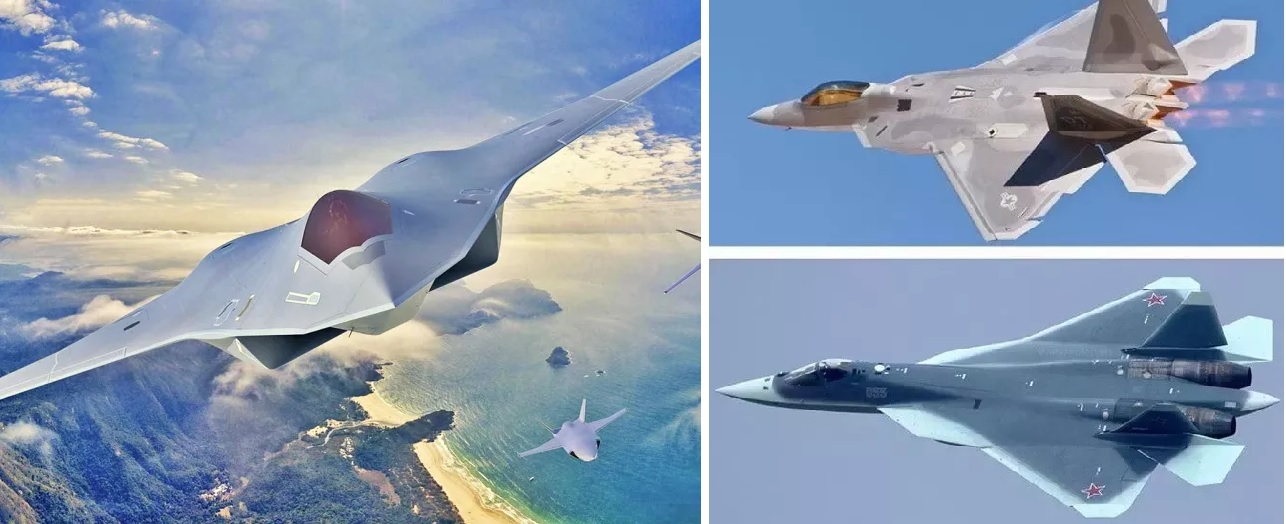 Key Differences Between 5th vs. 6th Generation Fighter Jets
Key Differences Between 5th vs. 6th Generation Fighter Jets
-
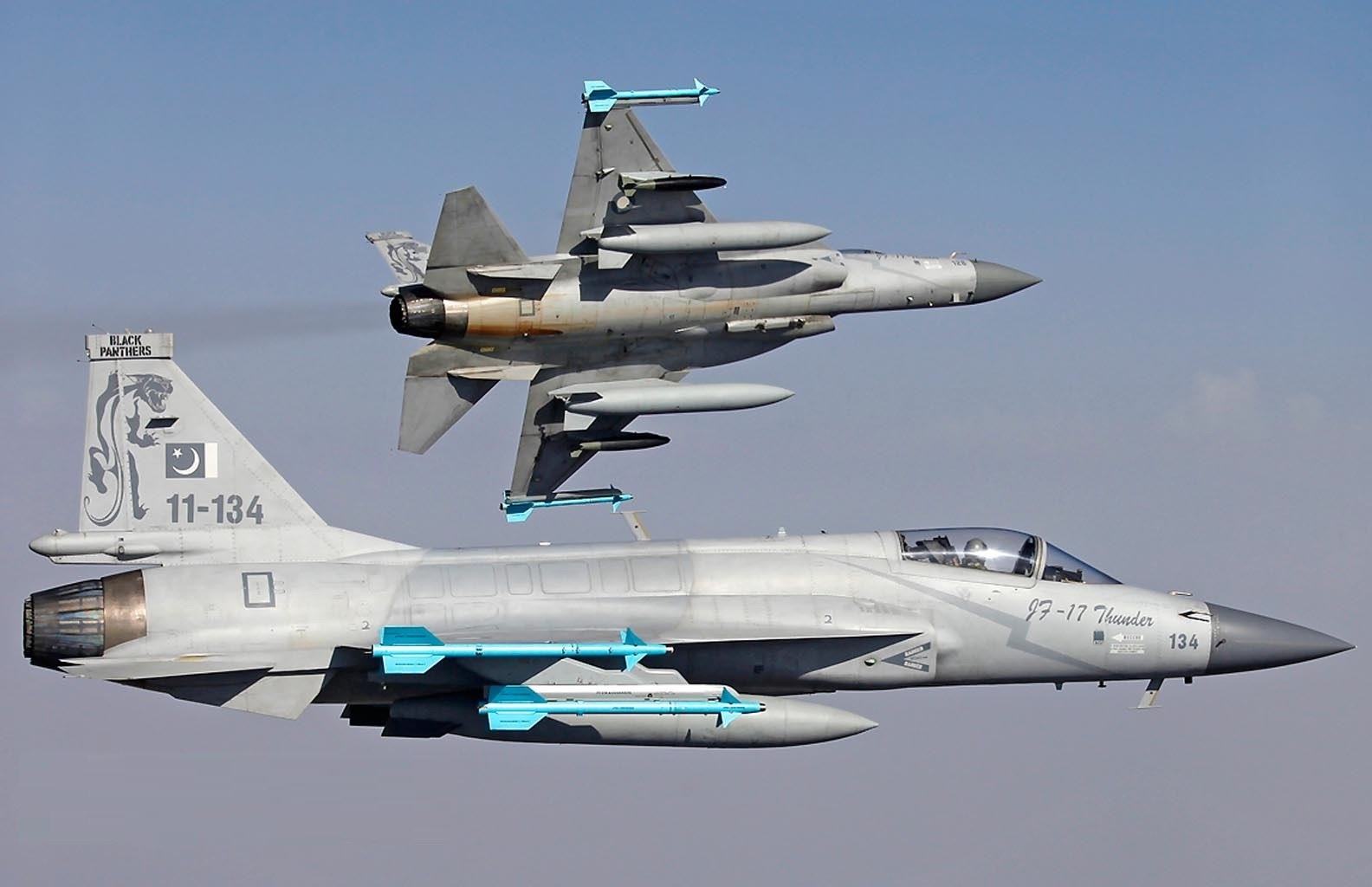 Pakistan Air Force to Unveil Stealth-Enhanced JF-17 Block 4 Fighter Jet by 2028
Pakistan Air Force to Unveil Stealth-Enhanced JF-17 Block 4 Fighter Jet by 2028
-
 Pakistan Announces 15% Increase in Defence Budget for 2024-25 Amid Economic Crisis
Pakistan Announces 15% Increase in Defence Budget for 2024-25 Amid Economic Crisis
-
 India’s AMCA Engine Decision: Safran vs. Rolls-Royce Final Expected by 2025
India’s AMCA Engine Decision: Safran vs. Rolls-Royce Final Expected by 2025
-
 India's TEDBF Program Takes Shape First Flight by 2028: Aiming for Naval Supremacy with Advanced Stealth and Technology
India's TEDBF Program Takes Shape First Flight by 2028: Aiming for Naval Supremacy with Advanced Stealth and Technology
-
 What Would Happen if the USA Left NATO? A Comprehensive Analysis
What Would Happen if the USA Left NATO? A Comprehensive Analysis
Top Trending in 4 Days
-
 Mass Killings in Sudan: Satellite Images Reveal Atrocities as Civil War Turns into Genocide
Mass Killings in Sudan: Satellite Images Reveal Atrocities as Civil War Turns into Genocide
-
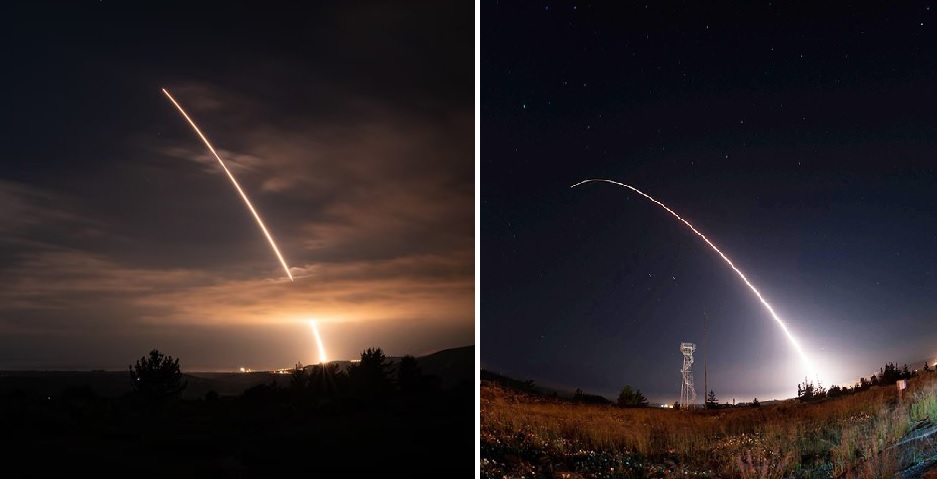 United States Successfully Conducts Unarmed Test Launch of Minuteman III ICBM from California
United States Successfully Conducts Unarmed Test Launch of Minuteman III ICBM from California
-
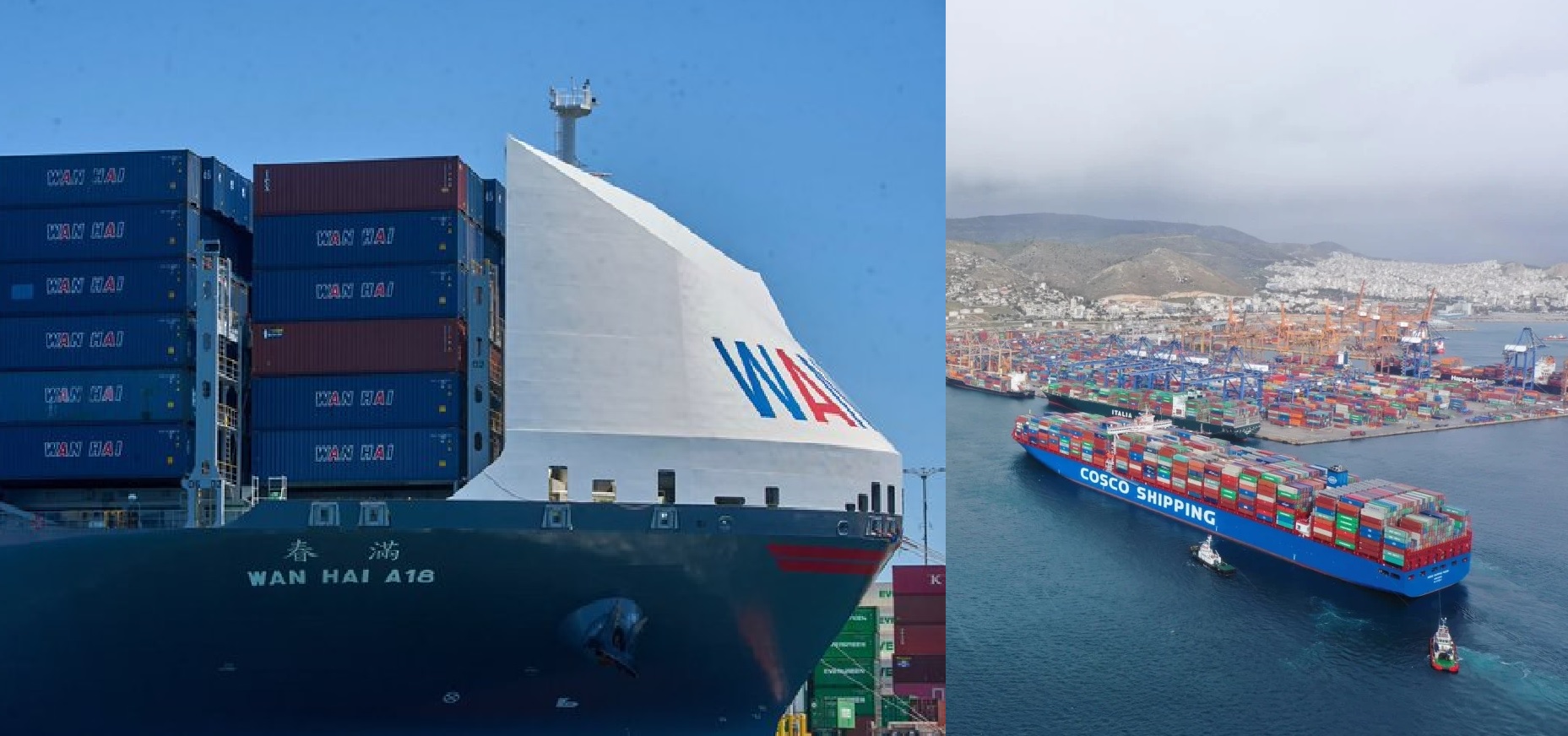 China Unveils the World’s First Thorium-Powered Cargo Ship, Carry up to 14,000 Shipping Containers
China Unveils the World’s First Thorium-Powered Cargo Ship, Carry up to 14,000 Shipping Containers
-
 Blogger Claims Il-76 Cargo Plane Shot Down in Sudan Was Recently Purchased from Kyrgyzstan for $12 Million
Blogger Claims Il-76 Cargo Plane Shot Down in Sudan Was Recently Purchased from Kyrgyzstan for $12 Million
-
 China Begins Trial Production at the World’s First Flying Car Smart Factory in Guangzhou
China Begins Trial Production at the World’s First Flying Car Smart Factory in Guangzhou
-
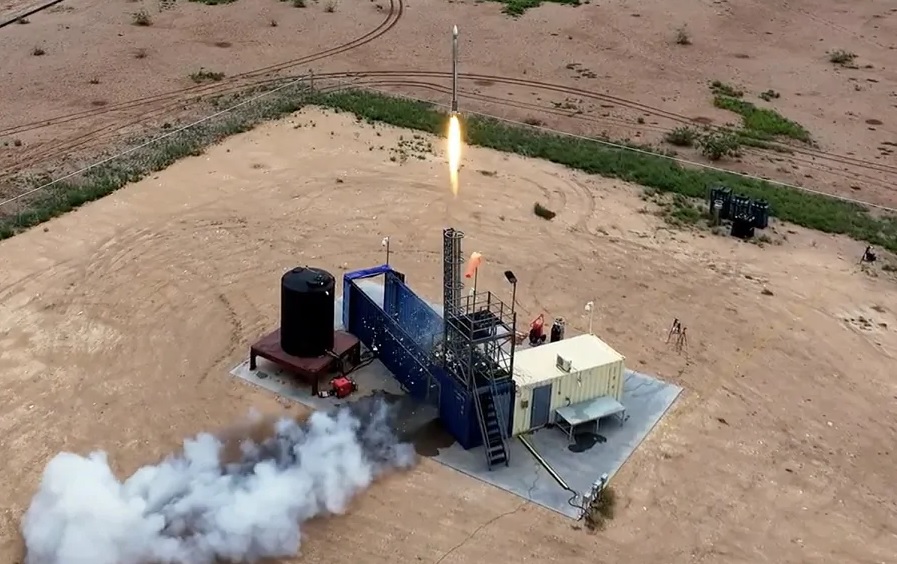 Hanwha Defense USA Invests in Firehawk Aerospace to Accelerate 3D-Printed Rocket Motor Production
Hanwha Defense USA Invests in Firehawk Aerospace to Accelerate 3D-Printed Rocket Motor Production
-
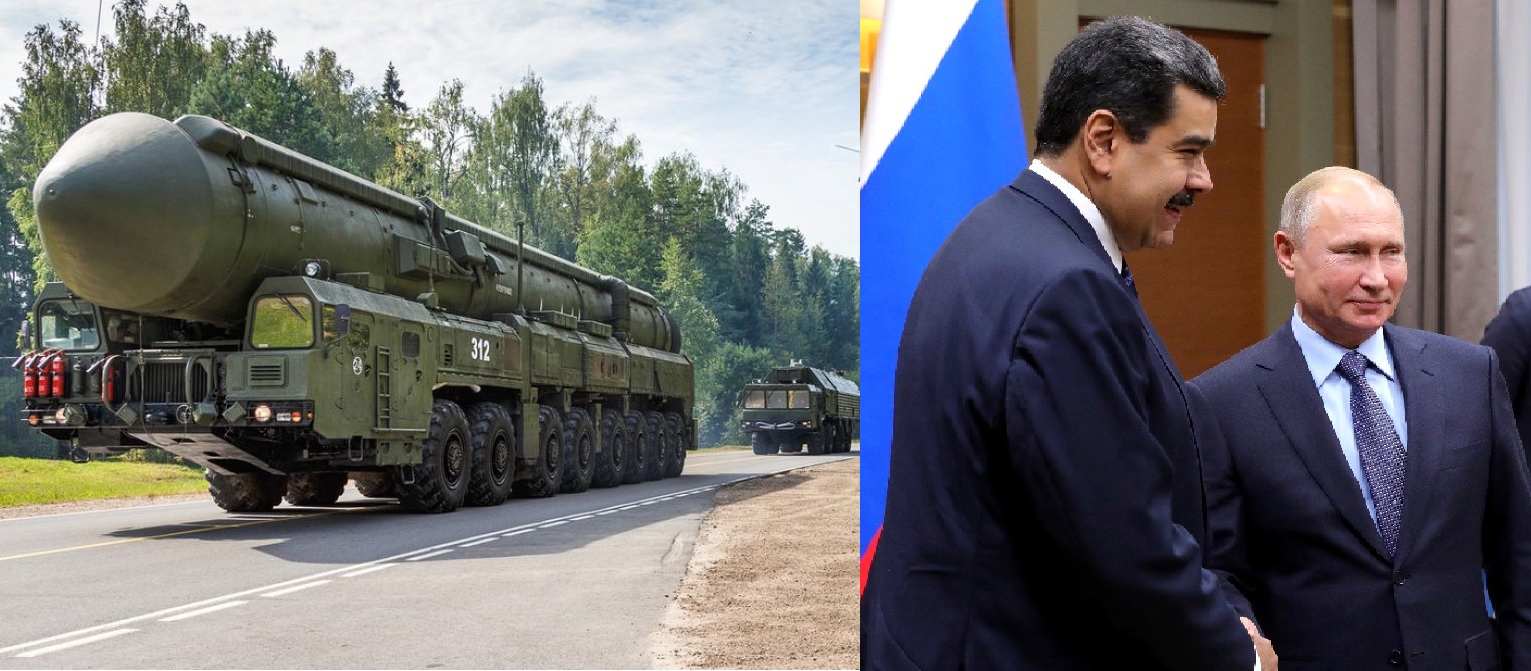 Russia Considers Supplying Venezuela with the “Oreshnik” Missile System — Why It Matters
Russia Considers Supplying Venezuela with the “Oreshnik” Missile System — Why It Matters
-
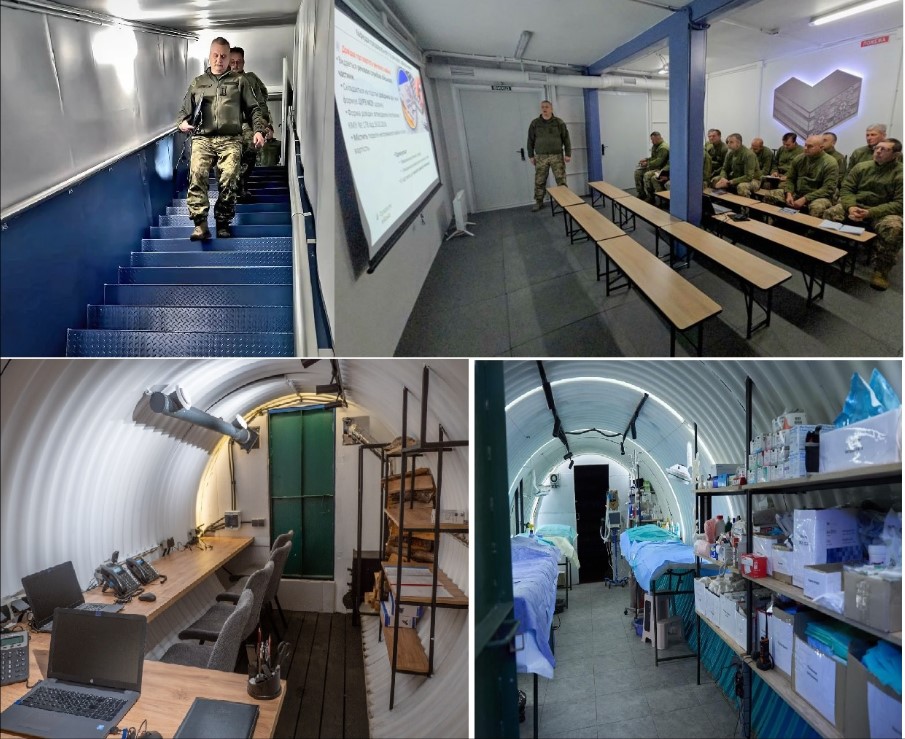 Ukraine Opens First Underground Military Training Hub Built with Metinvest’s Steel Dream Technology
Ukraine Opens First Underground Military Training Hub Built with Metinvest’s Steel Dream Technology

